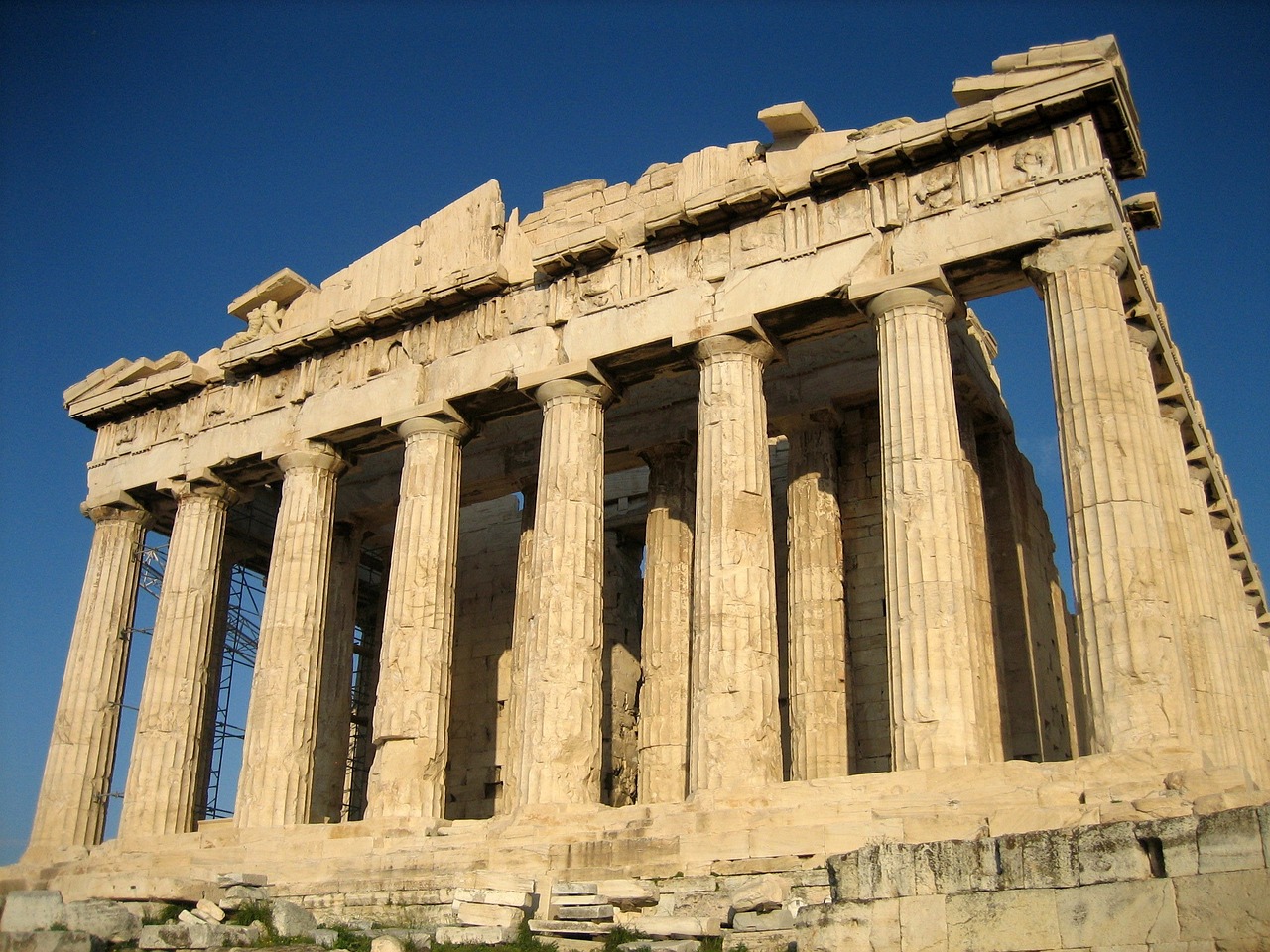Immigrant Life Themes

The War Years
World War II - brought death, destruction and displacement.
Communism brought division and rivalry between the democratic, United Stated and the communist, Soviet Union and their respective allies competed for political and military supremacy culminating in the Arms Race.
Greece, was devastated by the huge refuge crisis of 1922, the Great Depression of the 1930s with its high unemployment and social unrest and the two world wars.
During those turbulent years, the Dodecanese Islands of which Rhodes Island is a part of, was under Italian occupation (1912 to 1945).
Following the victory of the Allies in 1945, the islands became a British military protectorate and Dodecanese unification with Greece was formalized in 1947.
The Greek flag was finally raised on March 7th, 1948 ending centuries of non - Greek rule.
The fear of communism was becoming a dangerous political force at this time which forced many Greeks to leave the land of their birth seeking for a more peaceful and prosperous life in other countries.
Australia was known as the Lucky Country and the land of opportunity - a place to build dreams.
Constantinos (Con) Athanasas
Con Athanasas is a Korean war veteran.
He was born in the hilltop village of Mesanagros in Rhodes Island, Greece and raised in the rural life of Southern Rhodes.
Con was one of those brave soldiers of the Hellenic Infantry Battalion who had to cope with the horrors on the battlefields and trenches and ultimately, saw many of his friends die.
Others returned to long-term suffering with physical disabilities or, haunted by the images of war still imprinted silently in their memories and their dreams.
The Korean War (1950-1953)
The Korean War had its origins with the collapse of the Japanese empire at the end of World War II.
In August 1945, the Korean peninsula was split in half along the 38th parallel and became occupied by Russian communists in the north of the line while the democratic, United States occupied the south.
The Korean War began on 25 June, 1950 when the North Korean Communist army, supplied and advised by the Soviet Union, crossed the 38th Parallel and invaded the democratic South Korea.
In June, 1950, the United Nations joined the war with 21 nations (including Australia and Great Britain) on the side of the South Koreans (the United States sent about 90% of the troops to aid South Korea).
When U.S. and South Korean forces marched into North Korea it resulted in a massive intervention by communist Chinese forces in late 1950 to aid North Korea.
Greek Participation in the Korean War
After, the Greek Civil War (1946 - 1949) in which communists tried to over-throw the democratic Greek government, Greece felt obligated to participate in the alliance against communism.
They formed a “Special Expeditionary Force” (GEF), involving ground (Hellenic Army infantry battalion) and air forces (Royal Hellenic Air Force) which they sent in response to the United Nations appeal for assistance in the Korean War.
The Greek battalion of just under 900 men were named "The Spartan Brigade" under Spartan Lieutenant Colonel Georgios Koumanakos were placed under the overall command of the US 1st Cavalry Division and later under the overall command of US 3rd Infantry Division.
The war subsequently bogged down into a bloody stalemate and finally in July 1953, the Korean War came to an end.
Some 5 million soldiers and civilians lost their lives during the war - yet, the Korean peninsula is still divided today.
Though small in number the Greek courage and bravery led to the unit being awarded the US Presidential Unit Citation by President Harry Truman.
On the 69th anniversary of the Korean War, the Korean Ambassador of the Republic of Korea to Greece, acknowledged the sacrifices of the Greek veterans of the Korean War: "Of the Greek soldiers, 186 died in the battlefields and 610 were injured.”
“Our constitution is called a democracy because power is in the hands not of a minority, but of the whole people.”
~ Pericles
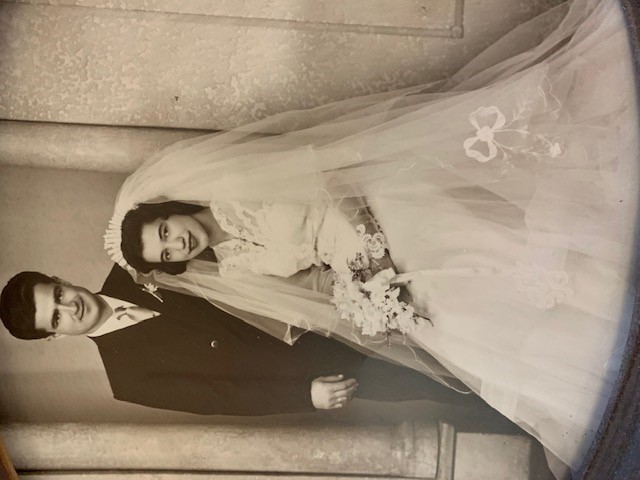
Dimitria Athanasas (nee Manis)
Dimitria Manis was born in the village of Mesanagros, Rhodes Island (famous for the Colossus of Rhodes), Greece in 1938, the year her father Simeon migrated to Brisbane, Queensland, Australia when she was just 4 months old and her brother Mihali (Michael) was under 2 years of age.
Dimitria, her brother, Mihali and their mother, Flora were able to migrate to Brisbane in 1948 to re-unite with her father, Simeon.
They settled in the working-class suburb of West End where both, she and her brother attended West End State School.
She worked as a dressmaker creating women's garments throughout her working life.
For Dimitria, serving God, her church and her community is a way of life that is driven with a sense of purpose for the common good of humanity.
Sunday School Teacher
A Sunday School teacher is a disciple of Jesus Christ who help the young to develop the spiritual eyes, ears, and heart so they can seek spiritual realities beyond this world.
Dimitria and her family have always been active church members at the Saint George Greek Orthodox church in West End, Brisbane.
Over a lifetime of devoted service, Dimitria, the humble, Religious Instruction Teacher of West End State School (the school she attended as a student in her youth) taught about:
*love to help children feel secure
*hope to build their confidence for the future
*faith so children will grow spiritually.
"The greatest among you will be your servant".
Charismata - Gifts from the Heart
Dimitria is a blessed individual who has empathy and understanding for the aged and frail.
She has a sense of community that empowers and energizes them from feeling isolated and depressed by sharing quality time with the residents of Saint Nicholas, Greek Orthodox Nursing Home in Brisbane in a range of activities.
She enthusiastically provides companionship and contentment on a weekly basis, reading books, reciting poetry and enjoying morning tea with the aged that enhances the lives of senior residents.
Dimitria's inspirational Greek poems that she recites to the aged, are heart-warming reflections from a wonderful, bygone era that flow out of her heart are valuable, treasured gifts from her Southern Rhodes heritage (Rhodes Island-Greece).
These moments stimulate conversation, bring people close together and has a soothing, therapeutic effect on the senior residents that helps to improve their mental well-being, overcomes boredom and loneliness and brings happy memories of good times back to life.
These activities have no financial cost - they just require the empathy of individuals like Dimitria Athanasas who make the time and commitment to care for their well-being.
Wisdom belongs to the aged, and understanding to the old.
-Job 12:12
Michael Manis
West End - Brisbane
Spoken in English
Michael Manis
West End - Brisbane
Americano
Spoken in Greek
Mick Michael
West End - Brisbane
Spoken in Greek
The Koumpis Brothers
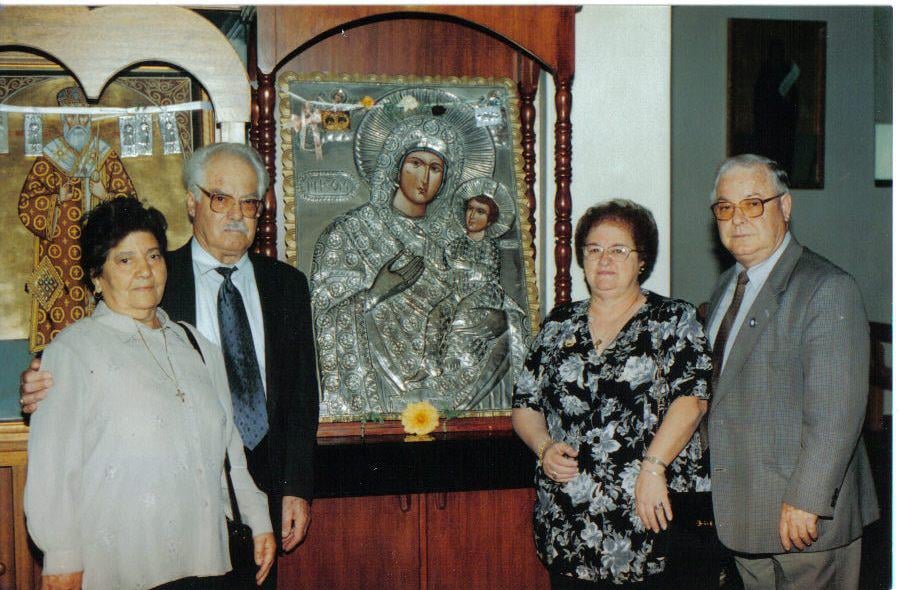
Evthokia and Lefteris Koumpis
Icons of St. Nicholas and Panayia Skiatheni (Virgin Mary)
Kalliopi and George Koumpis
Service is central to Christian belief because we follow a God Who Loves and a Christ Who came to serve.
Faith exercises a power over a Christian's life in a remarkable way to manifest a Christian spirit in all they do.
From way back in their small hilltop village of Mesanagros and as immigrants in Adelaide, South Australia, the Koumpis brothers, Elefterios (Lefteri) and Yioryios (George) knew what serving God was all about.
They were brought up in a loving Christian home environment and with the beautiful centuries-old rural traditions of their Southern Rhodes heritage that strengthen the bonds of faith, family and community.
Both entered into a lifetime of service and provi, ded their time and talents for the benefit of their church, their community and their fellow human being.
Down through the centuries we find in the Holy Bible how God's people have praised Him in song and through prayers.
Many magnificent voices have chanted to the Glory of God.
Like his own father, Lefteri was just one of the many whose inspirational, golden voice has chanted to Worship God, our dear Lord, Jesus Christ, our Blessed Virgin Mary, the Saints, Prophets and Angels.
For over thirty five years, he was a humble and faithful servant of God and to his beloved Saint Nicholas Greek Orthodox Church in Thebarton Adelaide.
George too, has invested a lifetime of dsevoted and faithful service at Saint Nicholas Church, the PanRhodian Society of S.A. "Colossus" and the Rhodian Mesanagrenos Association.
Lefteri was born in 1929 and married his wife Evthokia in 1949.
They have two children.
Lefteri migrated to Adelaide in 1955 and his family followed in 1959.
George was born in 1932 and immigrated to Adelaide in 1952.
He married his wife Kalliopi in 1959 and they have three children.
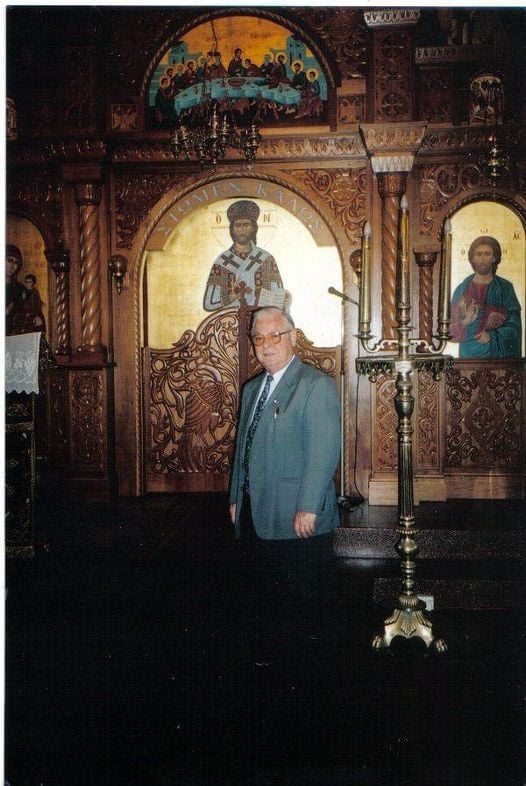
The Arnas Family
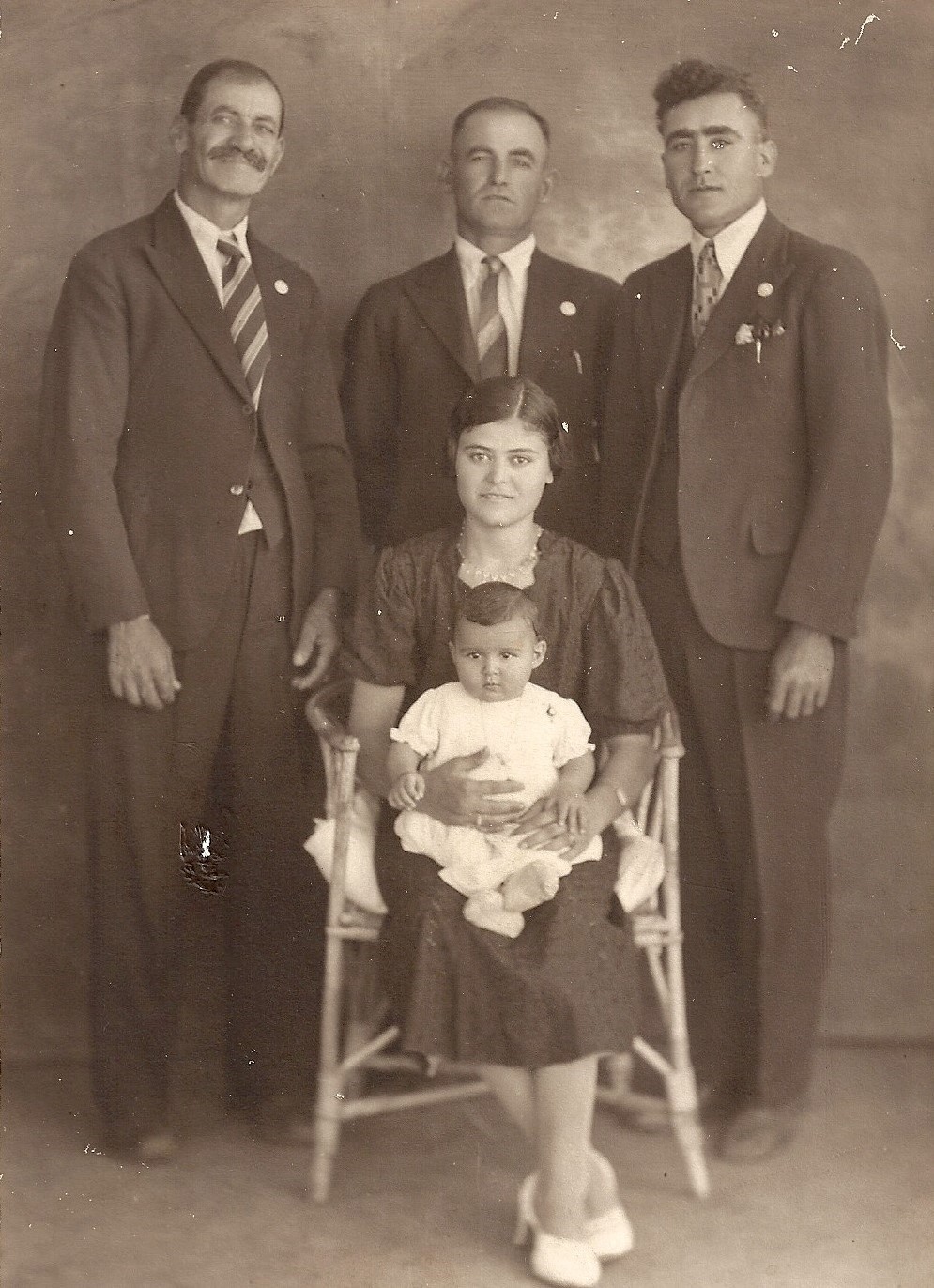
With the backdrop social, political and economic upheaval of the pre-World War II years Christos Arnas and Zaharoula Diakomihalis found themselves at the crossroads of life during the late 1930s.
Christos was from the village of Katavia and her mother Zaharoula, came from the village of Lahania, Rhodes Island.
Both, Christos and Zaharoula, decided to leave the island of their birth in search of a more peaceful life in Australia.
Christos and Zaharoula became immigrants, carrying with them the virtues of rural life - of farms and villages that work the old-fashioned way.
Christos immigrated to Biloela, Queensland, Australia in 1936.
Zaharoula was brought to Australia by her father, Phillip Diakomihalis in 1937.
They had to adapt in a different world, while adhereing to their old traditional values of Southern Rhodes.
They linked arms and minds together and were married in Biloela in 1937.
Together, they planned, hoped and prayed for a better future in Australia.
Christos and Zaharoula bought a farm in the Callide rural area on the outskirts of Biloela where they grew cotton and raised livestock.
The Arnas family mixed-farming enterprise integrated the cultivation of crops (cotton was the main cash crop) as well as the raising of livestock.
Milk, meat, cotton, cereal, vegetables and fruit were all produced on their farm.
They worked under the heat of the sun and in the rain to watch over their crops and livestock seven days a week.,
Farm life was a strenuous, repetitive task and involved lifting and bending.
Harvesting crops, spraying fields, seeding, tilling fields, fertilizing, watering (or relying on rainfall), weeding and killing crop pests, milking cows, vaccinating calves, pasturing and feeding livestock meant that they were always busy day and night.
In the cotton fields the family toiled and endured to pull the white, fluffy lint from the boll while trying to not cut their hands on the sharp ends and they had to stoop to pick the cotton because the average cotton plant is less than three feet high.
Irene Diakos
Irene Diakos (nee Arnas), the eldest daughter of Christos and Zaharoula, was a 'war baby', born in Rockhampton, Queensland, Australia in 1938 (World War II 1939 - 1945)
Her brother, Phillip, was born in 1943 and her sister, Mary in 1944.
Irene fondly recalls the 1940s decade of the rural, close-knit community in Biloela and suburban life in Adelaide, South Australia during the fabulous fifties.
Irene, Phillip and Mary, along with their cousins Anna Stiliano and Eleni Frossinakis had to cope with living in two worlds - one of being a Greek child in a Greek family and brought up according to centuries-old, Greek family traditions.
The other - of surviving and succeeding within an Australian environment that was predominantly Anglo-Saxon.
Irene began school-life at the one-room Callide Primary School that had a single teacher who taught the academic basics to several grade levels of primary (elementary-age) boys and girls from the surrounding rural areas of Bilolela.
She would ride her bike to school - a gift given to her by her godfather, George Stiliano.
Every morning, before going to school, Irene would feed 32 calves and then, after school would feed the pigs.
When the Arnas family went to do their shopping in the town of Biloela they traveled in an 1800s style, horse and buggy (an old-fashioned reminder of a simpler, more slow-paced era).
Move to Adelaide, South Australia
In 1950, the Arnas family moved to Adelaide, South Australia and set up house in the western, working class suburb of Thebarton, in Cawthorne Street and next door to their cousins, the Stiliano family.
Irene, Phillip and Mary were enrolled at Thebarton Primay School.
Irene's working life began at her uncle, Matsis Fish and Chip shop at Largs Bay, serving the popular take-away food consisting of deep-fried fish in batter or bread crumbs with thick-cut, deep-fried potatoes sprinkled with salt (vinegar, optional) and traditionally served in newspaper.
Irene was thirteen when she first met Triantafilos (Ross) Diakos, Ross, her future husband, at the christening of little, Eva Pirakis (Eva's family were also immigrants from Lahania, Rhodes Island).
Twenty-two-year-old Ross was also a guest at the baptism who provided the music on his violin.
Irene was smitten from that moment and decided that he was going to be her future husband.
They were married in 1956 and had three children.
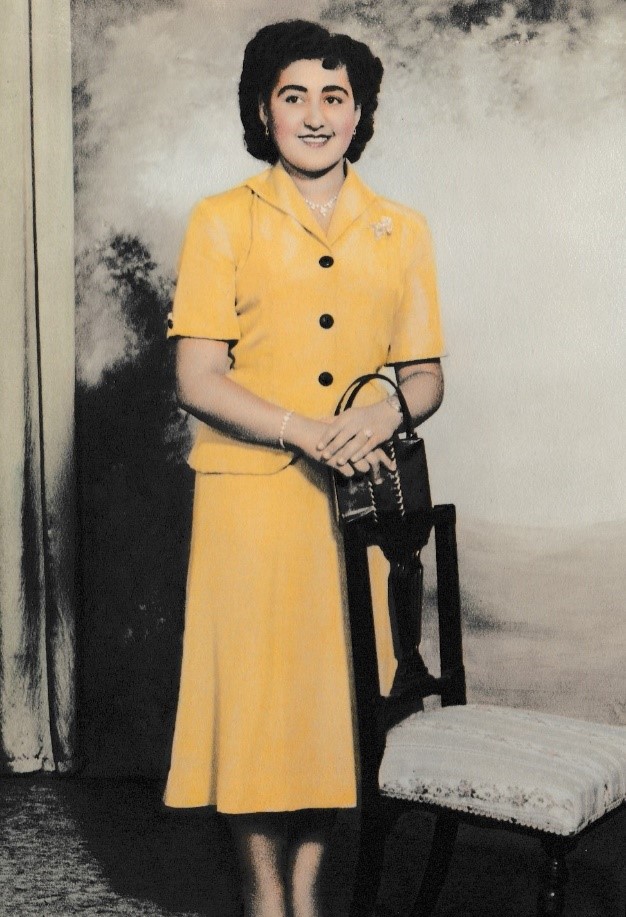

Phillip Arnas
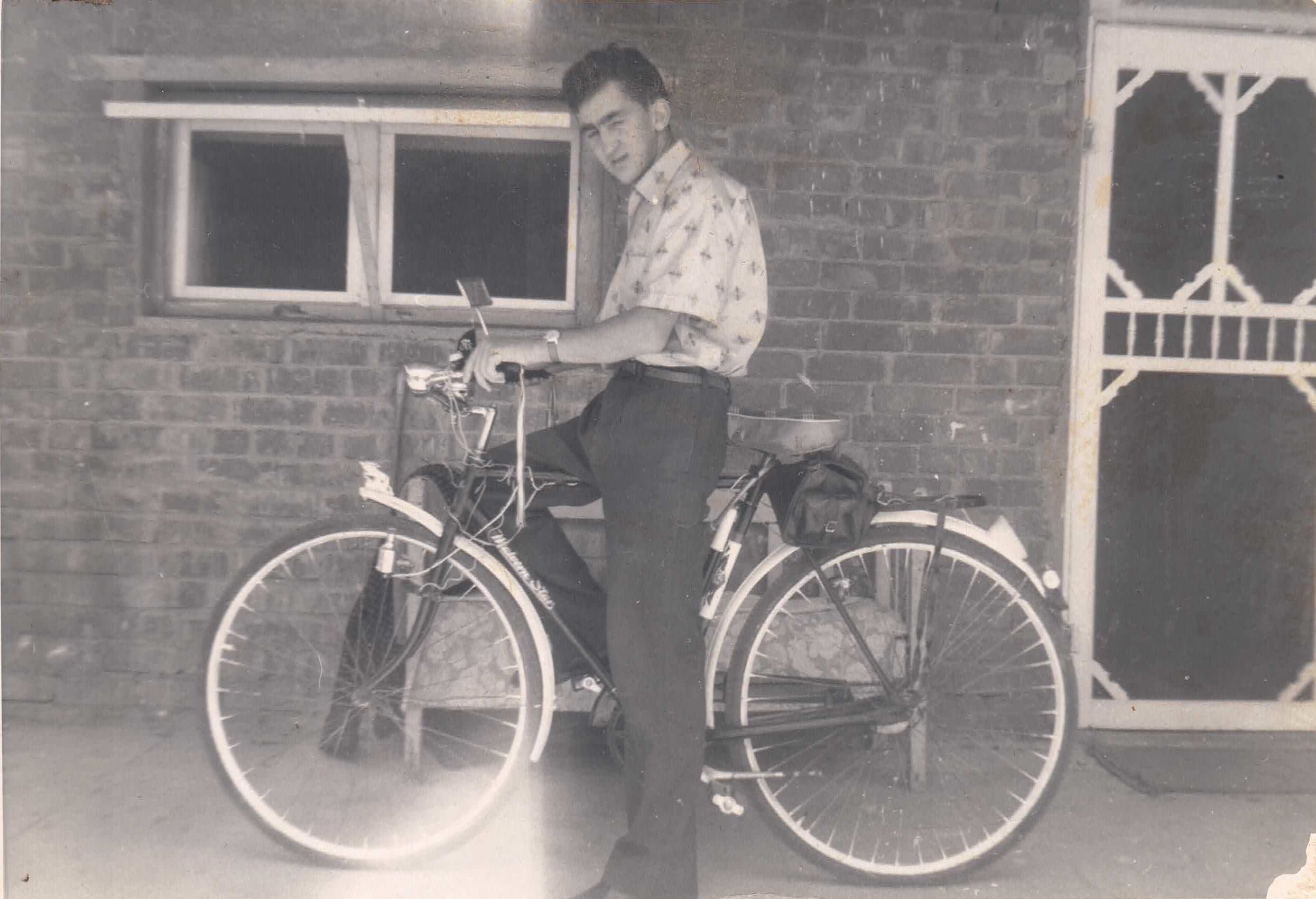
Gifted by God with Creative Spirit
Just like His earthly father, Joseph, Jesus was a Carpenter by trade Who worked with tools and got His Hands dirty to make things of value.
'Happiness lies in the thrill of creative effort".
-Franklin D. Roosevelt
Irene's brother, Phillip Arnas, was born in Biloela, Queensland in 1943.
Phillip was a newsboy who sold newspapers on the corner of North Terrace and King William Street, Adelaide, South Australia.
In the United States, the newsboy has become an iconic image of youthful entrepreneurship.
Famous American newsboys included Joe DiMaggio (one of the greatest baseball players of all time), Thomas Edison (America's greatest inventor), Dwight Eisenhower American five-star general who served as the 34th president of the United States) and Mark Twain (lauded as the greatest American humorist).
Phillip was gifted by God with creative talent and a natural ability to take on a particular project at hand and yield it to his design.
He used his motivation and energy to pursue those things that gave him fulfillment and valuable experiences to his life.
One of those endeavors, for example, was to take bike parts out of spare or abandoned parts at the dump to create bikes for himself and others.
"There is a fountain of youth: it is your mind, your talents, the creativity you bring to your life and the lives of people you love.
When you learn to tap this source, you will have truly defeated age".
-Sophia Loren
Phillip's strength in life was his humble heart that was clean and free of all selfish intentions.
When Jesus said, "My Kingdom is not of this world" (John 18:36) He was referring to God's Heavenly Kingdom, the eternal home of our dear Lord, Jesus Christ, our Blessed Virgin Mary, the Saints, Angels, the Prophets and all God's people - it is our Everlasting Paradise where close-knit families, are once more, reunited, forever and ever.
"Surely goodness and love will follow me all the days of my life, and I will dwell in the House of the LORD forever".
-Psalm 23:6
Mel and Mary Velis
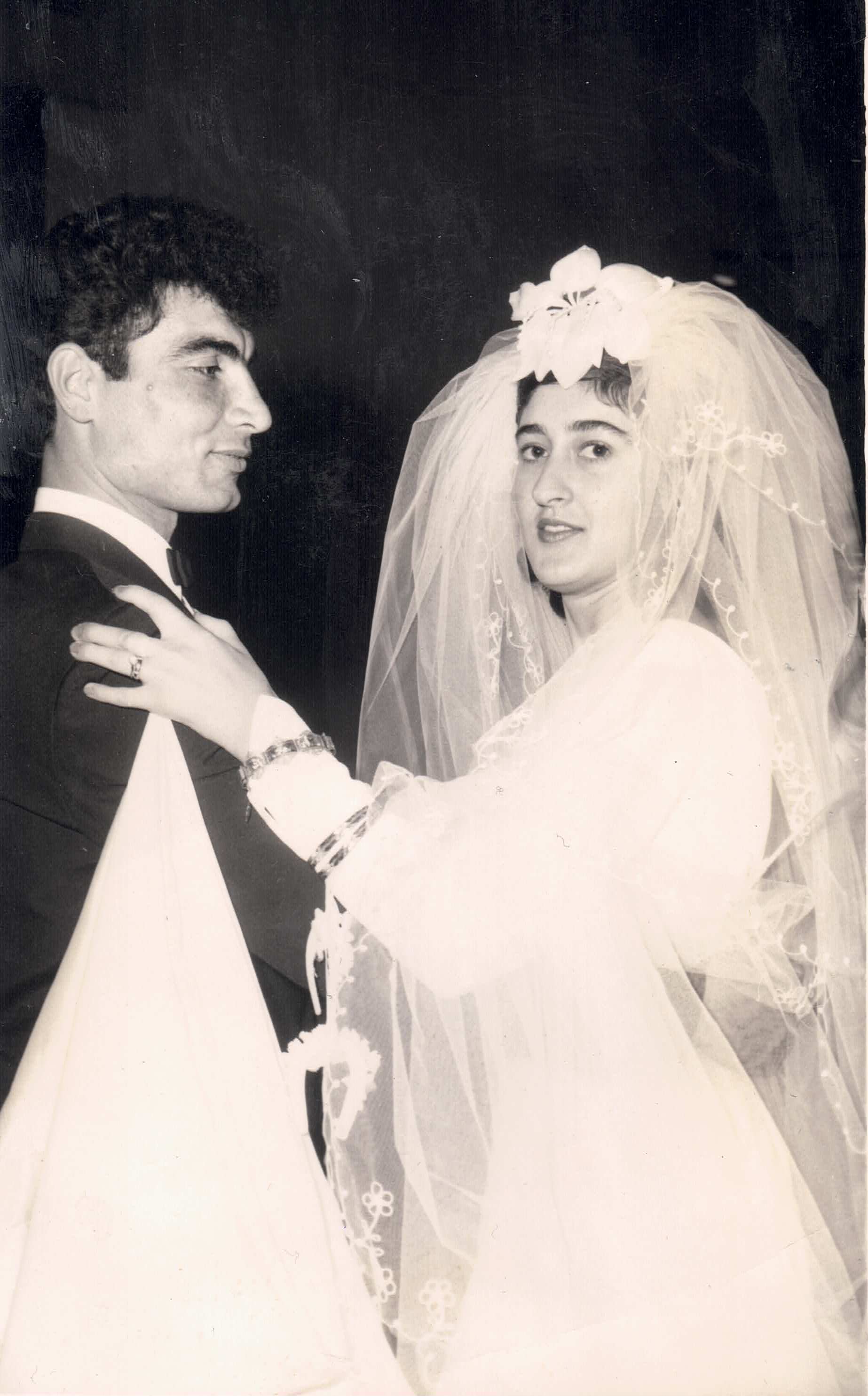
Bartholomeos (Meo) Velis - devoted husband, father and grandfather was born and raised in the beautiful, Southern Rhodes (Nótia Ródos) rural village of Kattavia (Κατταβιά) located on the southernmost tip of the island of Rhodes, Greece, about 84 km from the capital, during the Holy Week of Easter on the 26th of April, 1937.
Meo was the eldest of the five Velis children, followed by Vasilia, Ligeri, Sotiri and Moskovia.
The children were raised in the rural ways of their heritage with its traditional values, strong family bonds and a legacy of self-sufficiency.
A village environment provided the freedom of the outdoors with its acres of space and tranquil settings, allowed children to play to their heart's content because there are no strangers and the aged feel secure.
Young Meo was athletic and had powerful hand strength which he developed by doing the hanstand and "walking" home from school on his hands.
During those carefree days, Mel and his siblings spent many happy times with their close-knit, Trintis cousins.
Many of the cousins have since migrated to Baltimore, Maryland, U.S.A.
Meo was also one of the first in the village to own an Italian, Vespa scooter that gave him so much joy.
The village children would line-up to have their turn on riding with Mel through the village.
The only thing that Meo cherished more than his Vespa was his faithful dog who was always by his side.
Meo Velis spent a lifetime of toil and labor working in the fields, tending to livestock and orchards in Kattavia then, as an immigrant, worked in the physically-demanding, factory environment and as a self-employed contractor in the tiling industry of Adelaide, South Australia.
Mary Velis (nee: Arnas), the youngest child of Christos and Zaharoula, from Rhodes Island, Greece, who immigrated to Australia in the late 1930s, was born in Biloela Queensland, Australia in 1944, during the turbulent years of World War II (1939 - 1945).
Her sister Irene was born in 1938 and her brother, Phillip, was born in 1943.
Christos and Zaharoula bought a farm on the outskirts of Biloela where milk, meat, cotton, cereal, vegetables and fruit were all produced.
In 1950, the Arnas family moved to Adelaide, South Australia and set up house in the western, working class suburb of Thebarton, in Cawthorne Street, next door to their cousins, the Stiliano family.
Kattavia -Rhodes Island
Kattavia, with its legacy of farming and goat-herding, represents a golden age of traditional, Southern Rhodes in all its variety and vitality.
When the Knights Hospitaller ruled Rhodes (1310 until 1522), Kattavia became a fortified village where the population found refuge from the constant attacks by Ottoman Turk raiders and pirates.
The 19th century church of Ayia Paraskevi is dedicated to the Patron Saint of the village of Kattavia.
The Feast Day of Ayia Paraskevi on July 26 in Kattavia is a wonderful religious celebration with its special church services that is followed by their three-day festival within the village square in an unforgettable paniyiri (festival) of traditional food, music and dancing until the early hours.
The 10th-century church of Panayia Katholiki (Assumption of the Virgin Mary) is located within the village cemetery.
The popular windsurfing beach of Prasonisi is where the Aegean and Mediterranean Seas are separated by a strip of land jutting out to sea, just 8.6km from Kattavia, at the bottom of the island of Rhodes.
The Velis Family
Kattavia
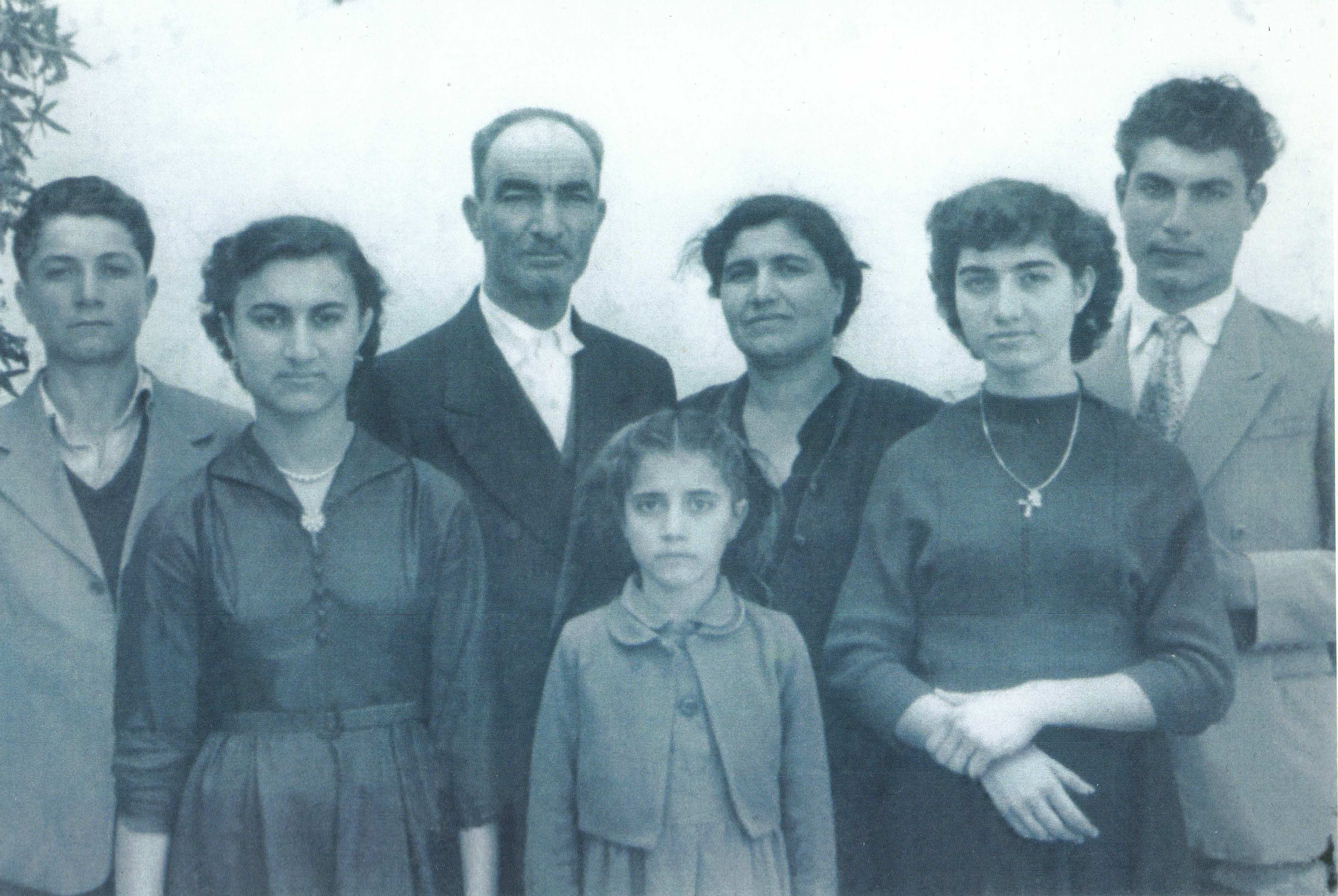
Meo's parents were Maritsa Trintis of Kattavia and his father was Ioannis Velis from Halki, an island of the Dodecanese located about 9 km (6 miles) west from Rhodes Island.
During the early years, Mel would regularly help his mother in caring for his sisters Vasilia, Ligeri, Moskovia and brother, Sotiris.
Support, love and caring for family members was deeply rooted in the humble Velis home in Kattavia that provided security and a sense of belonging within the family.
The Early Years
From the age of twelve, Meo learnt the rural ethic of toil and effort - to endure and labor in the natural elements.
He worked alongside his hard-working family in the fields, tended to livestock and their orchards, where past generations have labored before.
Meo would help his mother, Maritsa, by kneading the traditional village bread by pushing the dough away from him with the heel of his palm then, folding it over itself with his fingers, and pulling it back.
The kneading process of bread lasted for 10 to 12 minutes.
In those days, most village families would bake about twelve wholesome, rustic loaves from their own grains (Horiatiko Psomi) every Saturday in their outdoor, wood-fired, bee-hive shaped ovens and would repeat the weekly, bread baking process.
And of course, Meo's mother followed the spiritual association that many Greek women have, of making the sign of the Cross with their hand over a tray of food or bread as they are putting it in their wood-fired oven.
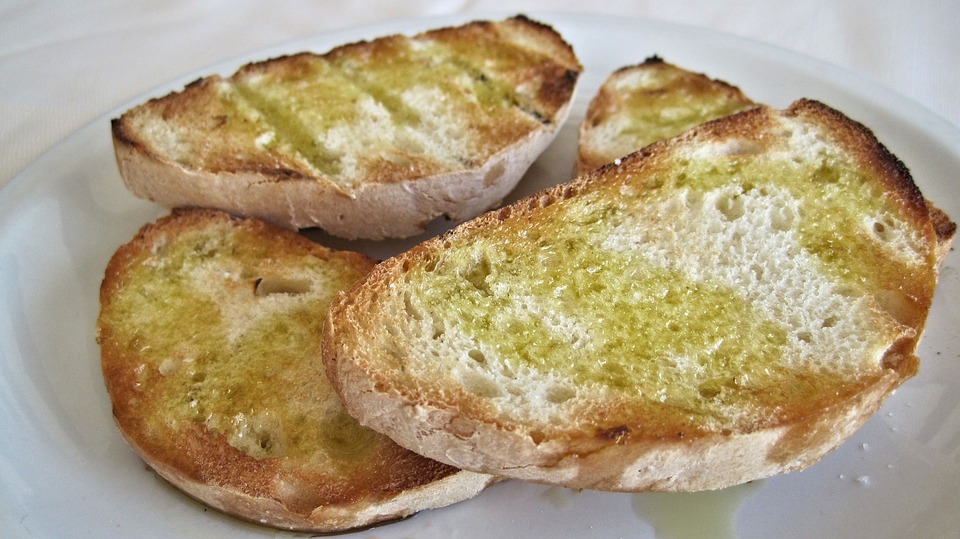
Mary Arnas
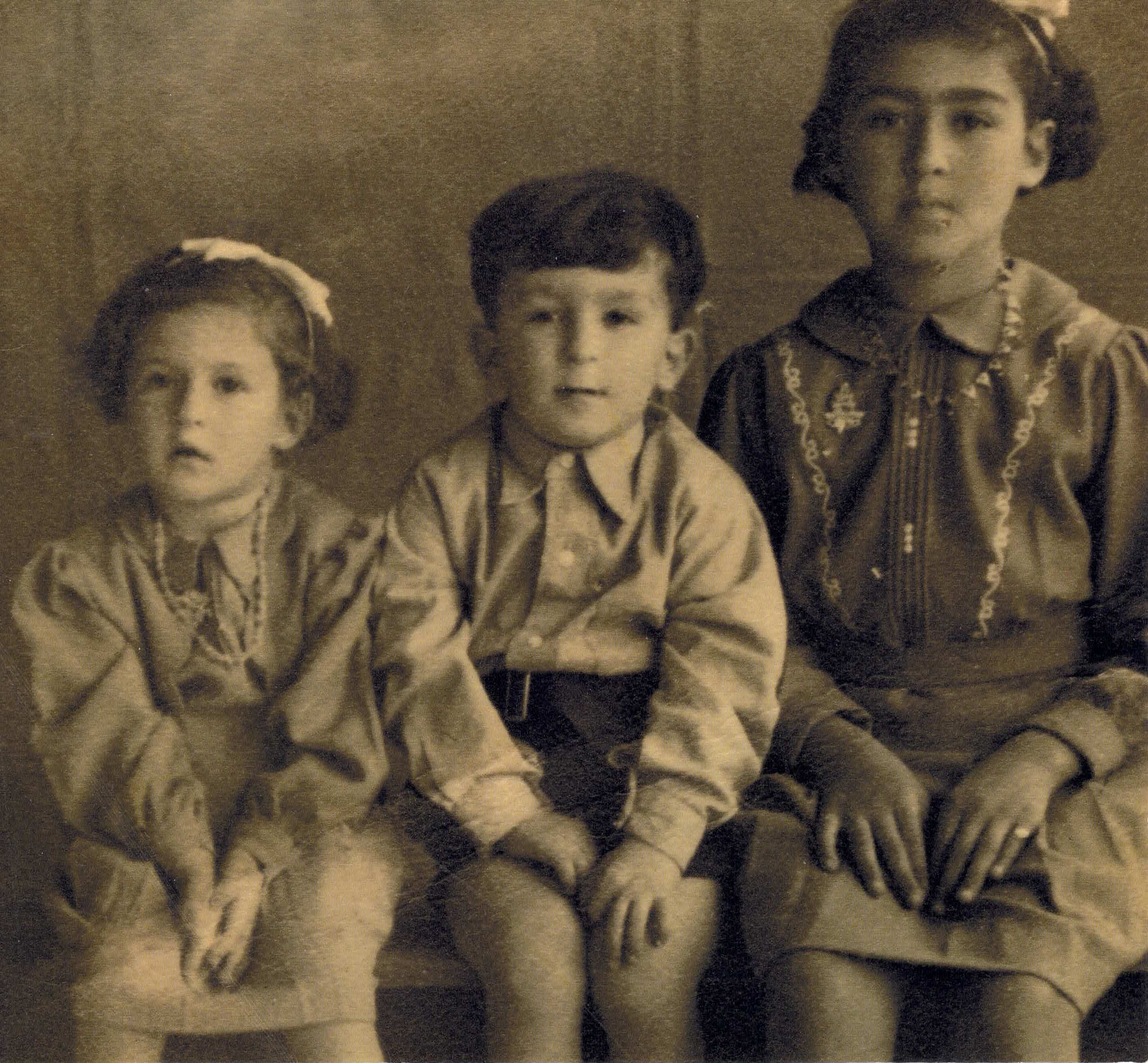
Two Unforgettable Journeys
Mary was four years old when her family returned to Lahania, Rhodes Island for three years.
The family frequently visited Kattavia to see her paternal grandmother, Eirini.
Mary's educational path began Lahania, the village where her mother was born and raised for one year.
Lahania, with its village rural feel, its little witewashed houses and the warm hospitality of the people and the friendships developed at school created a connection and a sense of belonging for Mary.
It is hard for a young girl, let alone her parents, to leave family, memories, experiences and the friendships behind.
Young Mary cried with sadness as she watched for the last time, the rugged hilly landscape and old-fashioned charm of Southern Rhodes disappear into unforgettable memories.
At fourteen years of age, Mary and her family left Adelaide to visit her maternal grandmother, Anna back in Biloela, Queensland.
While there, she enjoyed the exciting and exhilarating thrill of riding a horse.
Mary became fearless as the thrilling rush of adrenaline lifted her mood as she felt the power of the horse go into a full gallop and hear the pounding of its hooves on the rugged terrain.
Her relatives were surprised and amazed as they watched their little Mary riding her horse like a seasoned cowboy.
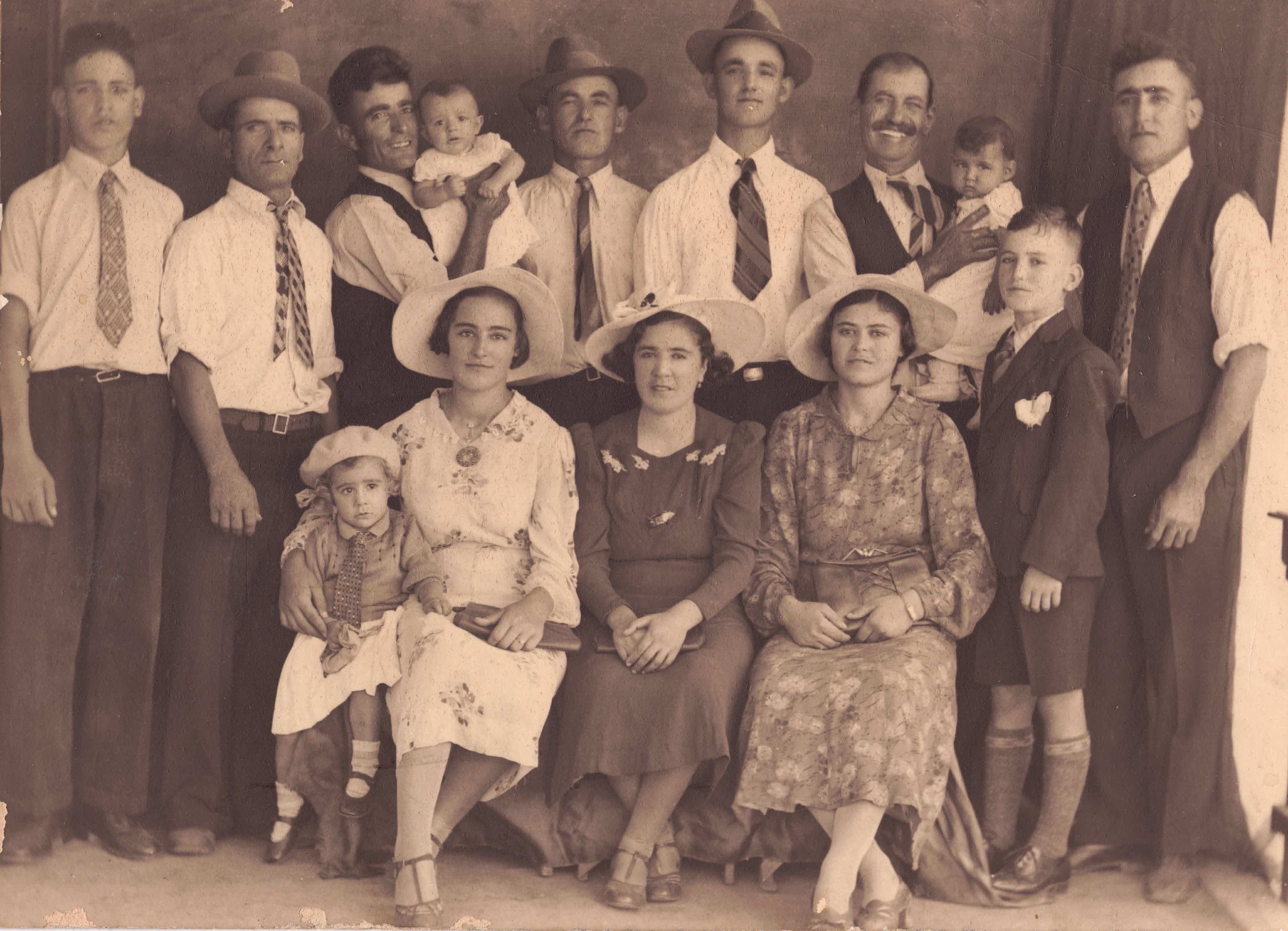
Greek Army
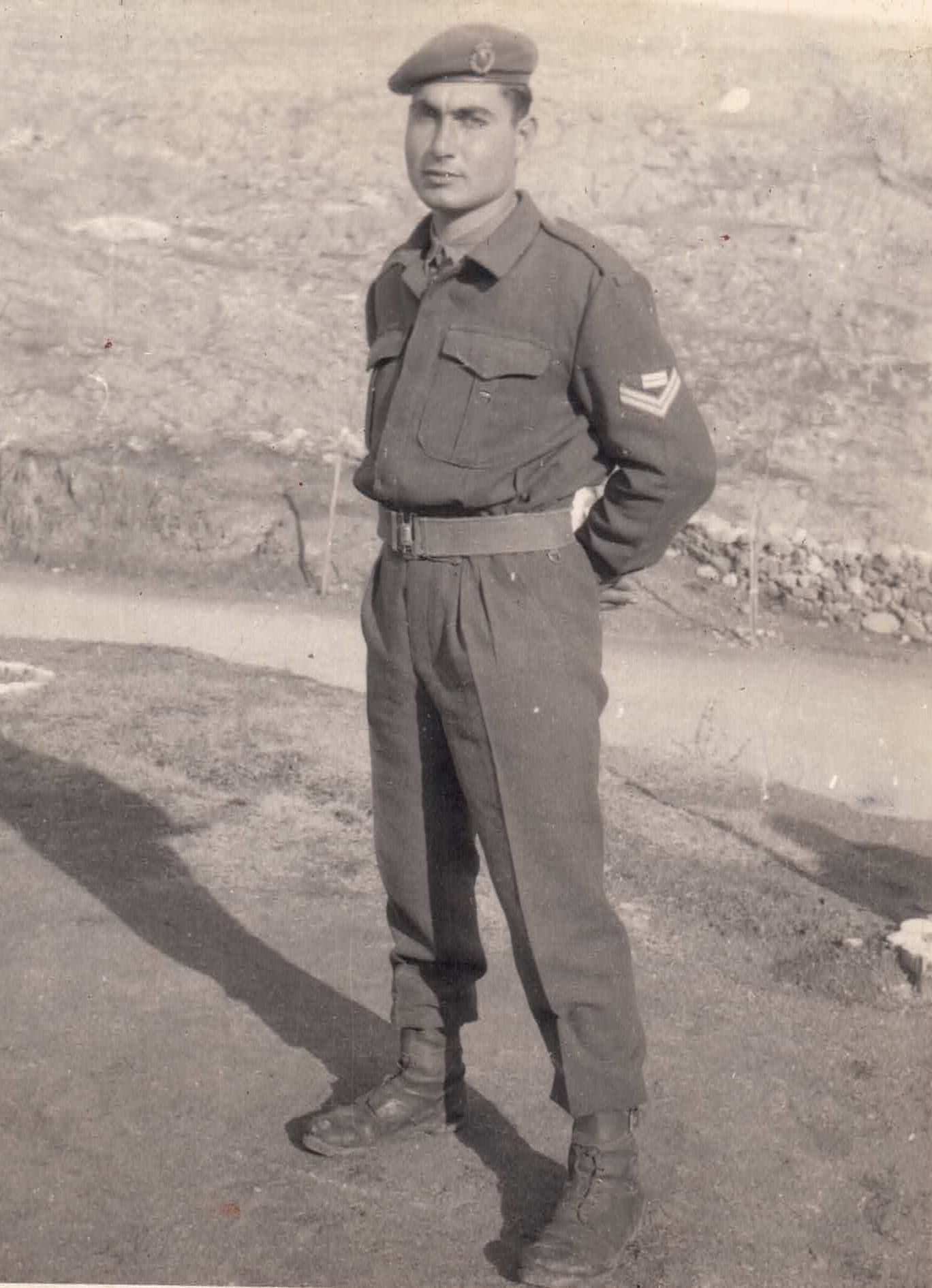
Patriotism is the feeling of love, devotion and sense of belonging to one's country.
Meo Velis spent two years of military service for the sake of his country's welfare.
Like all Greeks, he was proud of his country's glorious and noble history and rich, cultural heritage.
Greece is one of the few countries in the world that has universal compulsory military service for males from and over 18 years of age.
Military conscription is needed to protect the sovereignty of their country.
Like other young males who reach the military-age of service in Greece, Meo underwent the physically challenging and mentally demanding training that tests the limits of all new conscripts.
Through his military service, he gained the skills of teamwork, discipline, how to handle various weapons, rappel (descending a rock-face and other near-vertical surfaces), to march in time and the rank of Sergeant
Through it all, Sergeant Bartholomeos Velis valued his Greek military service for his beloved country, Greece, for life.
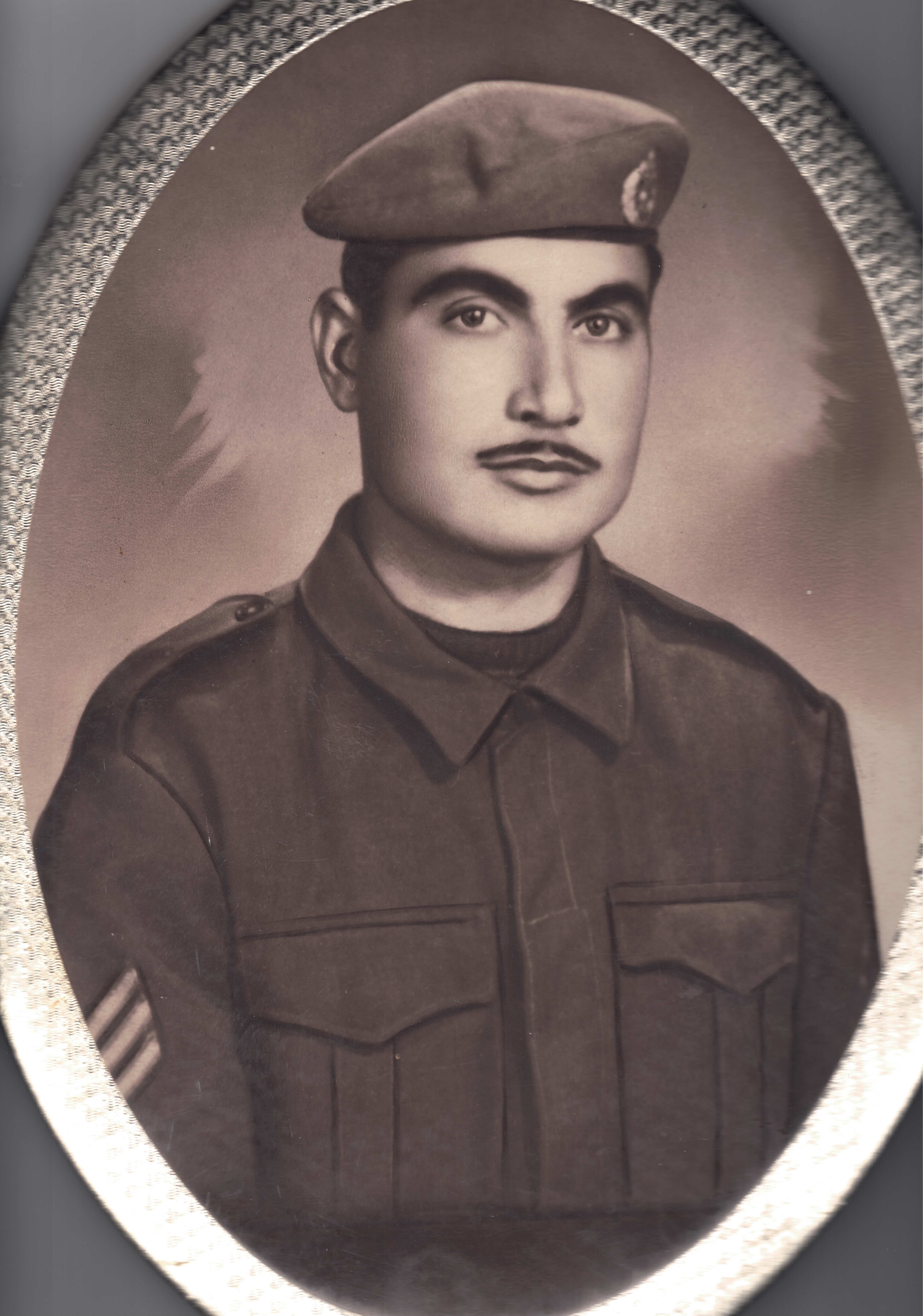
Australia
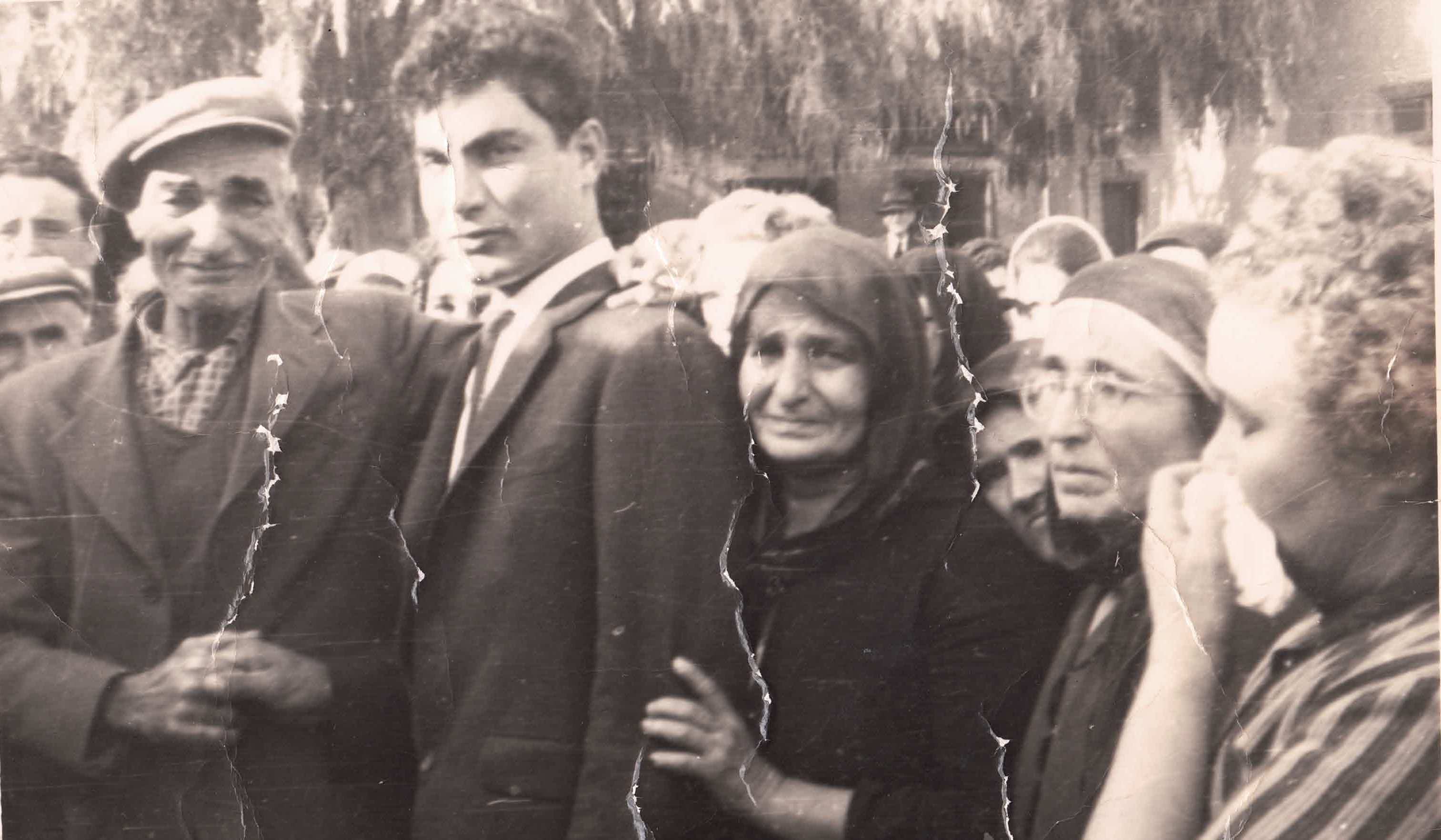
In 1964, Meo migrated to Melbourne, Australia seeking a new and more prosperous life living with his sister, Ligeri and brother-in-law, John Rossis in the suburb of Flemington.
Meo exemplified the hard-working immigrant who came from a rural environment of self-sufficiency, to suburban living and a world of repetetive, manual labor in the factory environment at the Ford factory with his brother-in-law.
In Adelaide, Meo worked multiple jobs simultaneously and although working full-time all week, he would work as an assistant to a tiler on the weekends where he became skilled in all facets of tile arranging, decorating and protecting floors and walls using various types of tiles in high traffic areas, porches, outdoor spaces and homes.
Meo worked on a full-time basis at Onkaparinga Woollen Mills, one of South Australia's oldest and most well-known bedding brands.
He then moved on to Scott Bonnar who manufactured low pressure brassware, agricultural equipment and various types of mowers, working as a foreman, responsible for co-ordinating and supervising his team to ensure all work was completed safely and on time.
Meo finally branched out into self-employment with his own tiling business, providing his clients visual color, value and beauty in their bathroom floors, kitchen floors and even the walls and hallways with colorful feature such as ceramic, porcelain, glass tiles, and other tiled mediums.
Marriage
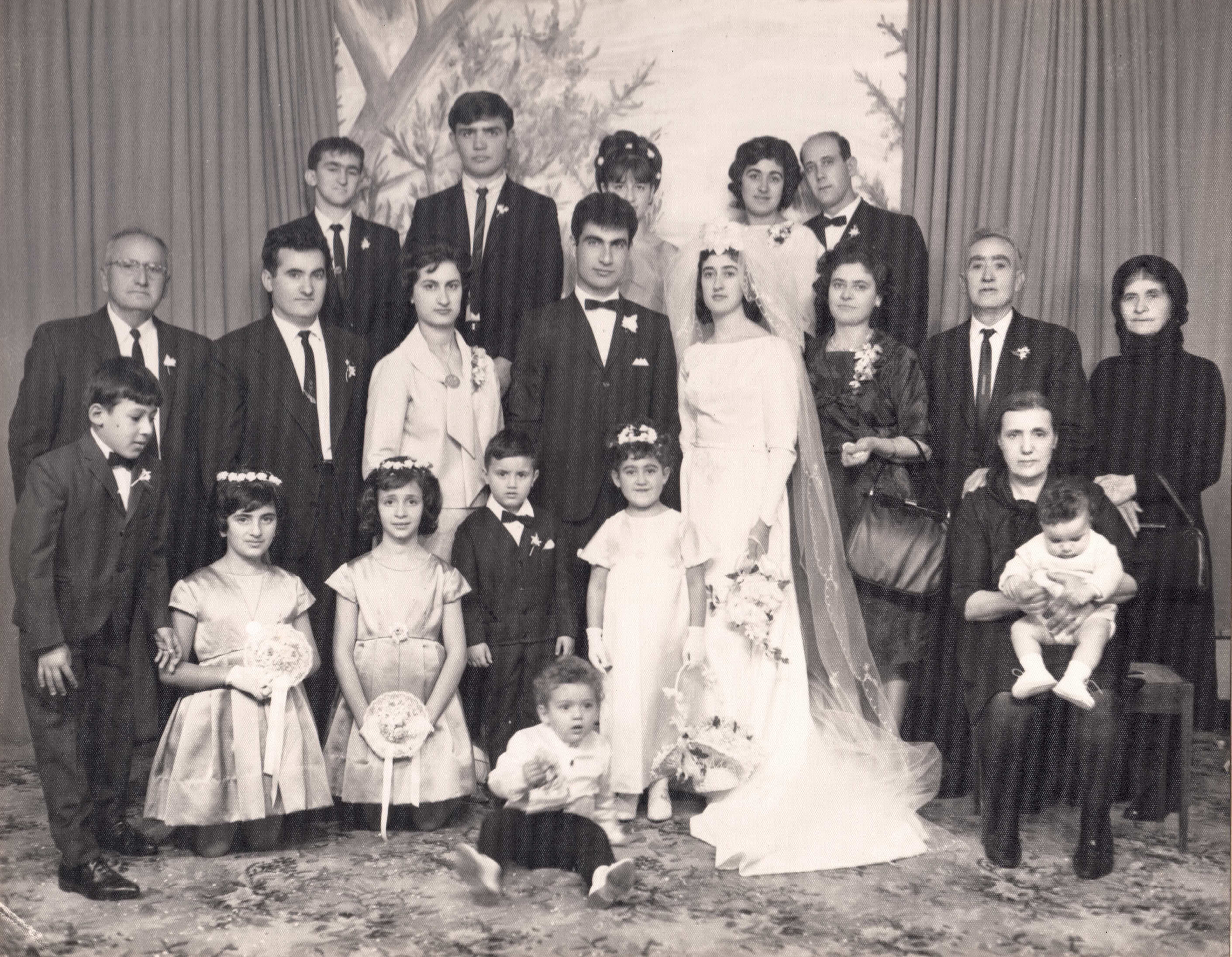
In 1965, Mary Arnas, visited Melbourne with her cousin Anna Stylianos and went to stay at her cousin, John Rossis home.
It was here, that Mary met Meo at the Rossis home and it was love at first sight.
They married on the 17th of April, 1966 in Adelaide's oldest Greek Orthodox church of Archangels, Michael and Gabriel (1937) in Franklin Street.
On the 27th of April, Meo and Mary welcomed their first child - a daughter whom they named Zaharoula.
On the 14th of February, 1969, they welcomed into the family, their son, John.
In the traditional, Greek family, the first born son is always named after the father's father in order to continue the family name.
If there is a second son, he is named after the mother's father.
Girls are named after each parent's mother's.
Meo and Mary raised their children on the traditional values of their Southern Rhodes heritage that ensured the warm bonds of the close-knit family and prospered spiritually through their Greek Orthodox faith.
Going to church for the Velis family was a regular activity, following the Greek Orthodox Calendar.
Sunday morning, they would go to Saint Nicholas, Greek Orhodox Church in Thebarton, Adelaide, South Australia to hear the Voice of God through Liturgy and the Sacraments and to acknowledge Jesus Christ as the King of their world.
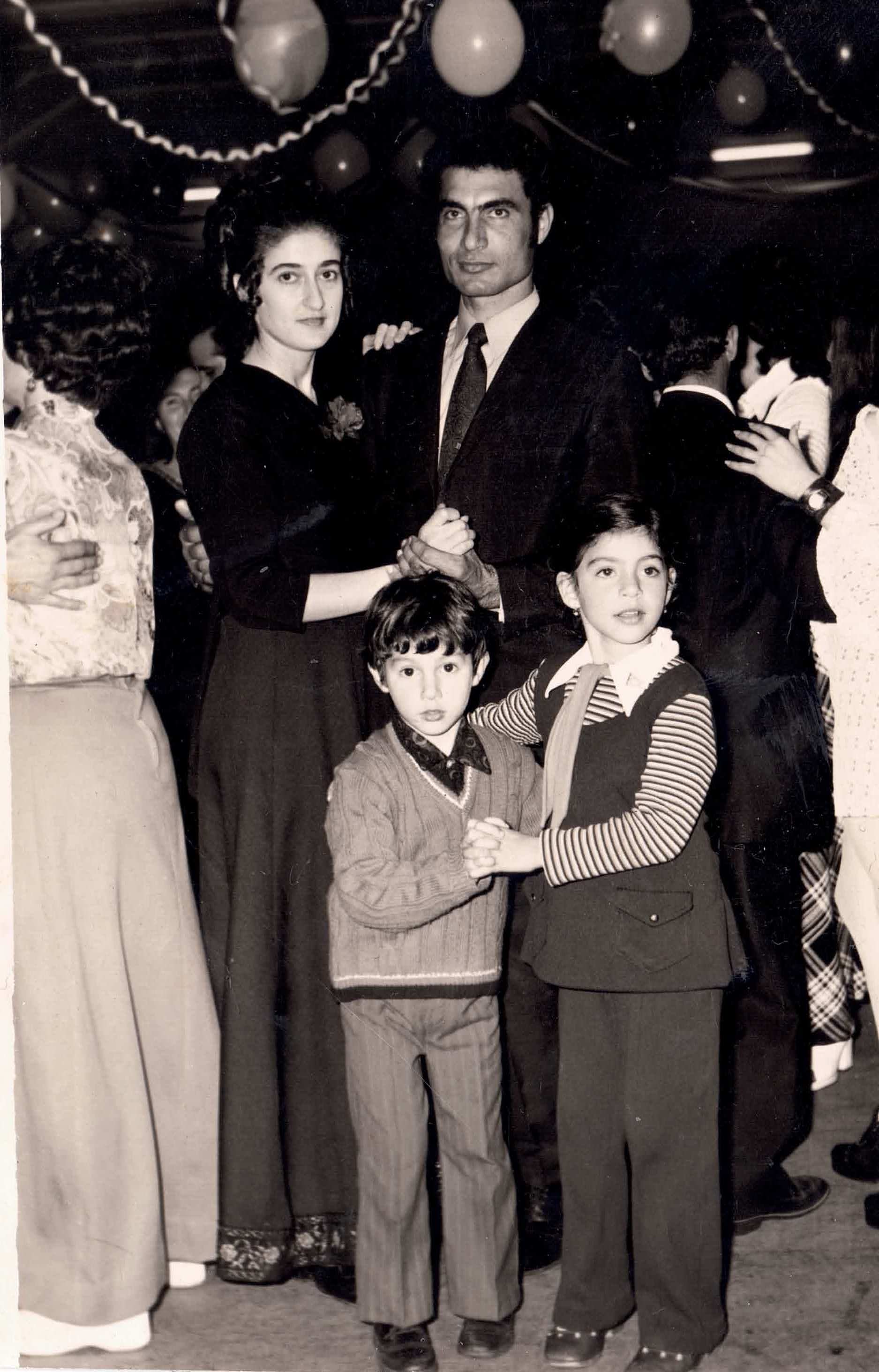
Spiritual Encounters
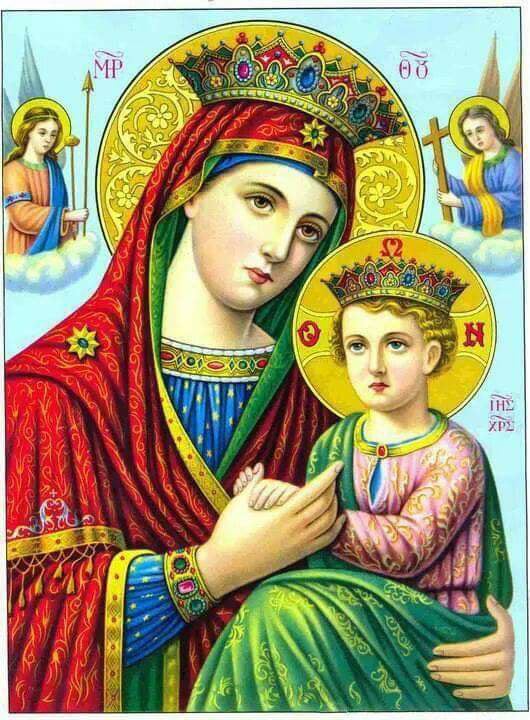
The spiritual world is rich.
A person touched by the Holy Spirit is forever changed.
Jesus Christ comes among His people in unique and special ways.
Religious dreams have a spiritual meaning from the issues that are playing on the mind.
Meo had the "eyes" of faith to realize spiritual realities that come from beyond this world.
In July, 1965, on the eve of Kattavia's, Saint Paraskevi festival, Meo woke-up from a dream and had the sensation of a heavy weight pressing on his chest and a woman dressed in black asking him what he wanted in life - wealth or happiness.
Meo answered , "happiness of course.*
Through his dream, Mel felt the Hand of Jesus Christ suddenly lift the heavy weight off his chest to be replaced with a spiritual energy flowing through and filling him with God's Grace (blessing) and an indescribable peace of mind.
Another spiritual encounter through a dream was of a man on a ship named Michael asking passengers if they knew Mel's address.
The coincidence of this dream at that particular time was the icon of Archangel Michael (Taxiarhis), the Guardian Angel, was being sent to Mel in Adelaide, South Australia by his mother from Kattavia, southern Rhodes, Greece to adorn the mantlepiece of her son's family home.
Greek Dancing
Dancing has been an important part of the national culture of Greece since ancient times.
It signifies joy and celebration as it brings the community and family together at important Patronal festivals (Christian) such as Feast Days or the celebrations of life such as Weddings, Baptisms and Name Days.
While some people "have “two left feet", others, like Meo Velis, were born to dance.
Meo had passion and individuality that made him stand out when he danced to the exhilarating joy (Greek: kefi) of traditional Greek music.
When Meo danced to the lively sirto music of his heritage, it lifted his spirits that is so intoxicating of Greek island music.
And, when he danced the traditional, Kalamatiano, he would generally lead the circle of dancers while waving a white handkerchief in his right hand.
Meo would always graciously leave the lead and go to the end of the line if there was a female there.
Gardening
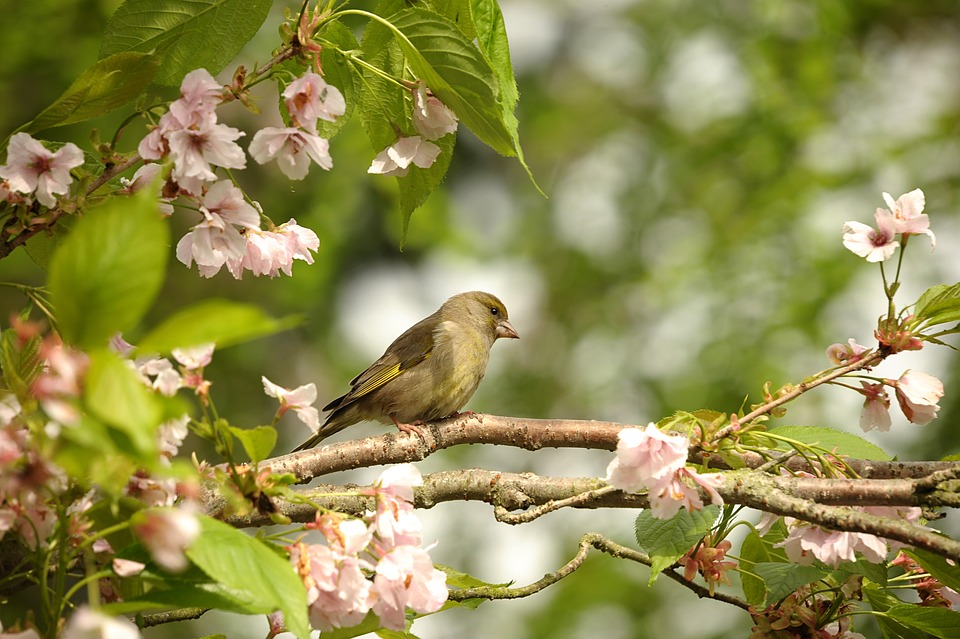
Gardening was Meo's favorite pastime.
In his neat, suburban home, with its half acre block, he found peace of mind in his own back yard where he would spend many hours daily, turning it into a lush, bountiful garden.
Meo's home-garden was a delightful landscape of peace and tranquility throughout the different season's of each year that opened a small pathway to God's natural world filled with warmth, beauty and color.
It gave a spiritual sense of being a part of something much greater than we could ever imagine.
Out in the clean, fresh air, Mel tended to his home-garden that provided a satisfying and healthy respite from the routine of every day life.
What a joy it was for Meo and his family, to watch the natural world in their own garden changing through the wonders of every season.
Meo's home-garden was filled with three orange trees, three mandarin, two fig, one nectarine, one peach, one grapefruit and olive trees which were picked for eating or processing into jam.
From Mel's home-garden, there was the best seasonal fruit, vegetables and herbs.
Flower beds with their stunning display of color mingled with lush, bountiful vegetable patches where tomatoes,zucchini, eggplant, peppers, cucumber, spinach, onions and garlic to name just a few could be freshly picked and cooked by Mary, his devoted wife who took pride in recreating the dishes of her heritage for the family dinner the same day.
And, there is the glorious array of herbs like oregano, basil, thyme, sage, rosemary, mint and parsley that are readily available for Mary to add that special flavor to her traditional, Greek island cooking she learnt as a young girl from her mother, Zaharoula.
This is old-fashioned cooking and this is home-grown produce that is nutritionally superior with extraordinary depths of flavor, unlike those found in the supermarkets.
Bee Keeping

Bee keeping has been vital to Greek life since antiquity.
It was referred to as the “nectar of the gods."
Honey was the first traditional sweetener used in ancient Greece and an important part of the modern, Greek cuisine.
Meo's home garden was a sanctuary from the hustle and bustle of daily life that created a feeling of timelessness in a colorful garden landscape with chirping birds and buzzing bees that delight the senses.
His home-garden produced honey, honey-comb and beeswax that came direct from his beehives.
Meo enjoyed the gratifying experience of tapping the pure, fresh honey from his hives and watch it flowing directly into each jar.
Just imagine:
*Twelve bees are required to make one teaspoon of honey.
*Thirty-six bees to make one tablespoon of honey.
*To make a 16oz jar of honey, 1152 bees are needed.
Meo's family benefited from the home harvested, pure, golden honey, to make the traditional loukoumathes and finikia.
The remainder Mel would sell to others for a profit.
Meo's Aviary
Meo loved birds.
Another of his favorite pastimes was as an aviarist in his home-garden where he had 70 canaries, finches and quails that gave Meo and his family many years of enjoyment.
Their happy nature and stunning beauty of these winged-wonders with their various colors and unique melodies are what makes them loved by so many people around the world.
In ancient Greece, birds represented power, freedom and wisdom.
In Greek mythology and legends they are portrayed as messengers of the gods and oracles.

Olive Oil
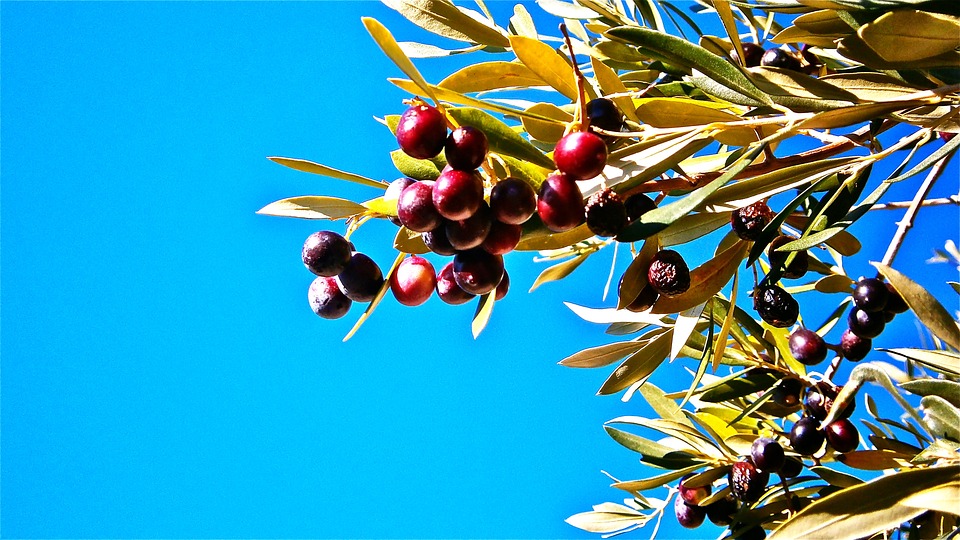
The olive tree is called the ”tree of life” due to the many health benefits from its olives and olive oil.
Traditionally, the olive branch is a symbol of peace and friendship which began in ancient Greece.
Noah's dove carried an olive branch to signify the salvation of life on earth after the Great Flood.
The spiritual meaning of olive oil symbolizes a Divine Presence (God).
Jewish Prophets of God were anointed with olive oil - they, in turn, anointed priests and kings.
Jesus Christ was referred to as the Anointed One (chosen by God).
The Good Samaritan treated the wounds of the beaten traveler with oil (Lk. 10: 30-37).
All Four Gospels of Christ tell the story of Jesus's Feet being anointed with oil before the Passover preceding the Crucifixion.
The Christian Church has used olive oil since the 4th century AD in the Sacrament of Baptism and other spiritual rituals.
In Greek mythology, the olive tree was sacred to the goddess, Athena and the ancient, city-state, Athens.
During the Olympic games in ancient Greece, an olive branch, twisted into a circle formed the crown on the head of an Olympic victor.
Meo's Olive Trees
From the olive tree to the kitchen table, Meo Velis produced liquid gold that is a staple of the healthy Mediterranean diet.
Meo nurtured his olive trees to harvest fresh, high quality olives and olive oil for his family.
He would harvest his olives during the autumn season by hand-picking direct from his own olive trees.
He would then cure his olives in salt to remove the bitterness and wash them before taking them to the olive press to be crushed and blended into olive oil.

The Velis Family
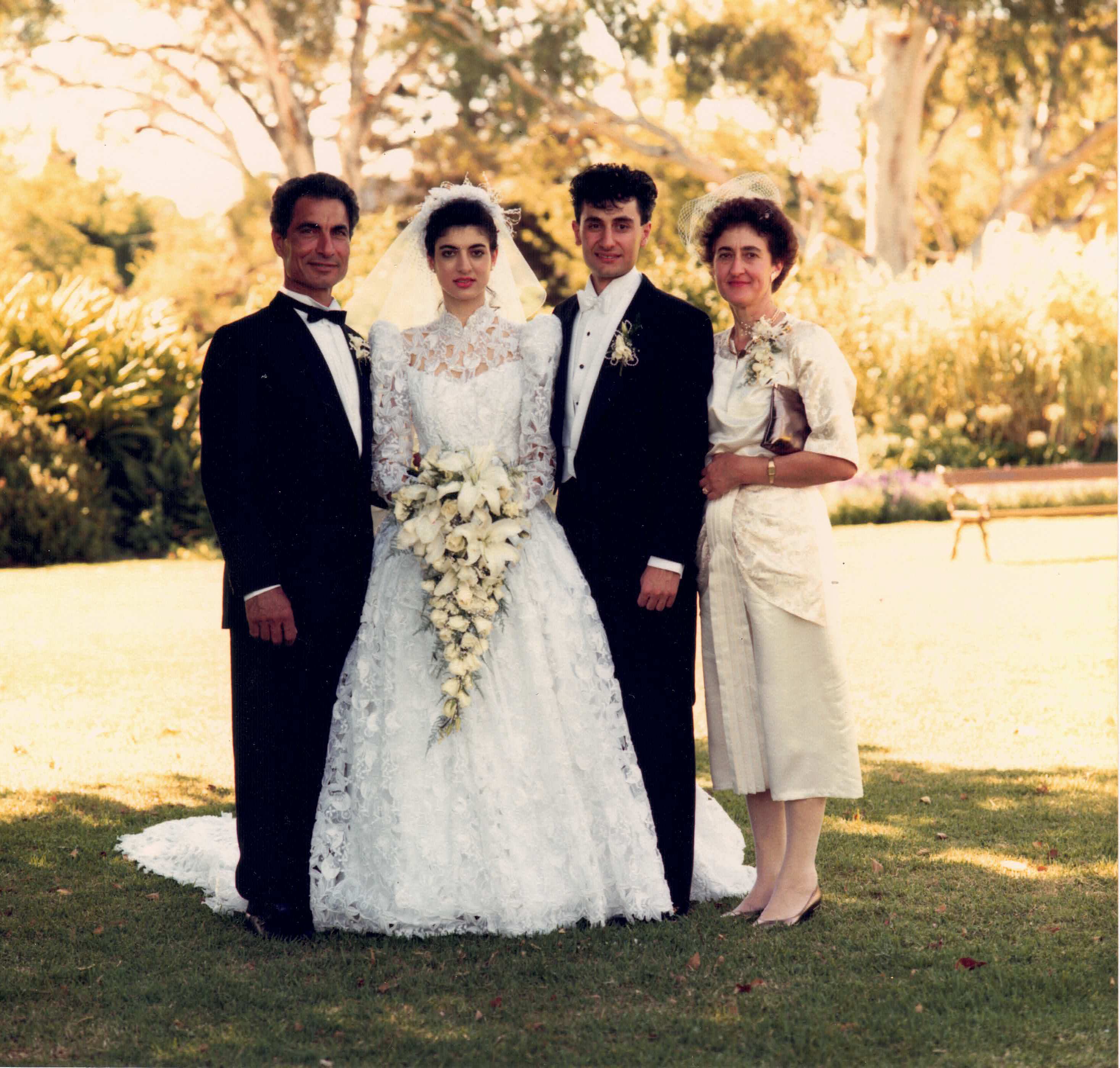
Meo Velis, the devoted family man and his wife, Mary, the traditional housewife have served their family well and can be satisfied and be proud as they see the visual results of a lifetime of labor in their warm and close-knit home, their two wonderful children, Haroula and John and their adored grandchildren.
Zaharoula's Children: Sophia, George, Bartholomew and Chrstian.
John's Children: Bartholomew and Xavier.
Under the guiding hands of a loving mother and father, the formation of good character was laid and the seed sown, which in later years brought forth such and abundant harvest.
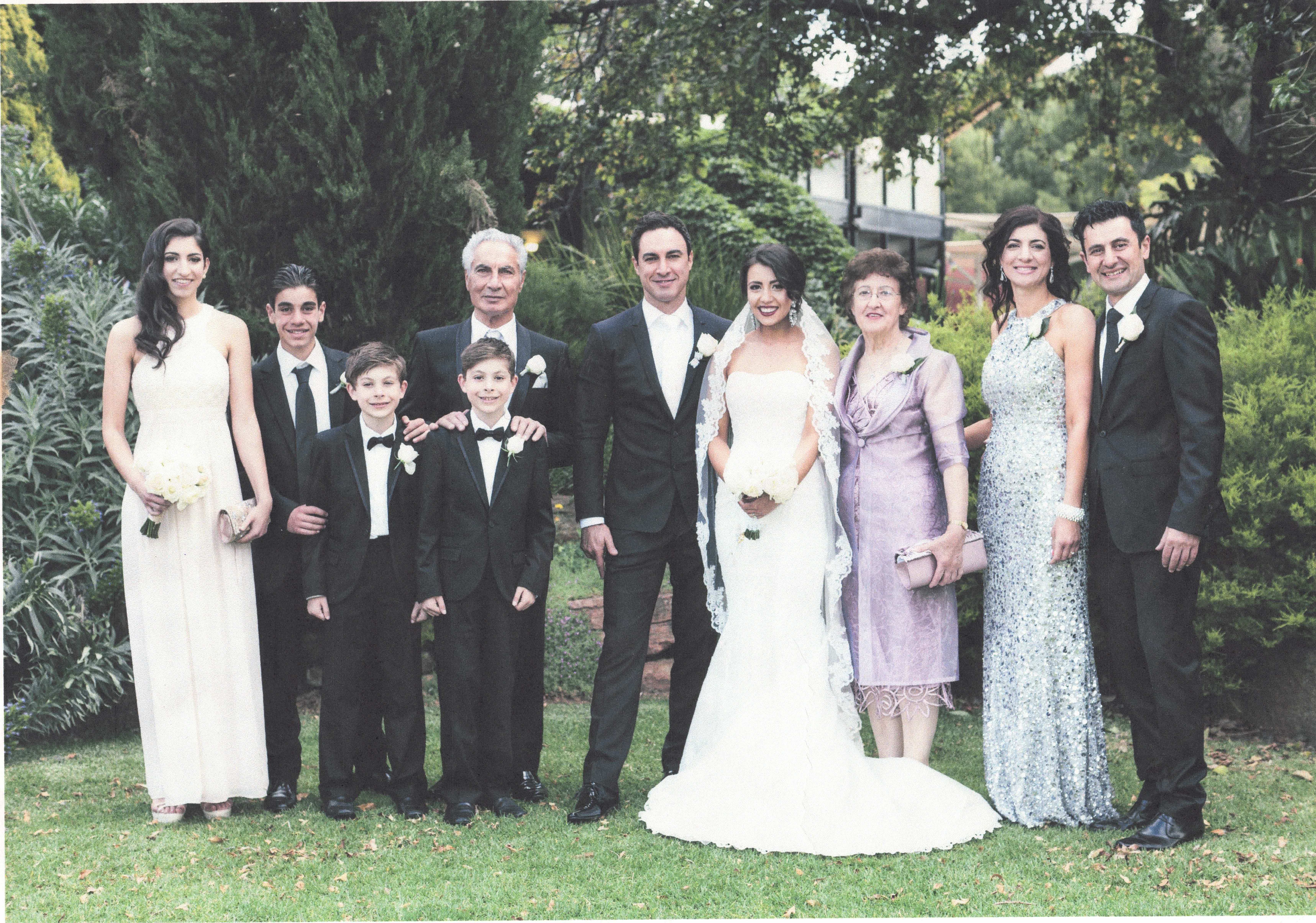
Anna Itsines

Cotton Fields of Biloela
Anna Itsines (nee Stiliano) and her twin brother George were born in 1945 in the rural town of Biloela located 594 km north of Brisbane, the capital of Queensland, Australia.
Greek immigrants began to settle here and the surrounding areas from the 1930s, starting both farming and town businesses.
These were the days when the Stiliano family traveled around in the 1800s style, horse and buggy (an old-fashioned reminder of a simpler, more slow-paced era) as their everyday means of transportation.
Anna and her brother George attended a one-room schoolhouse built upon stilts with a single teacher who taught the academic basics to several grade levels of primary (elementary-age) boys and girls from the surrounding rural areas of Bilolela.
The Stiliano family's aim was to increase income through different sources and to complement land and labor demands across the year.
Cotton seeds were planted in spring and the crop had to be harvested before the weather could damage or completely ruin its quality and reduce yield.
Their cows had to give birth to a calf before they could produce milk.
Some of their calves were reared for veal and about three quarters of the heifers became replacements for their adult milk-producing cows.
The long working hours lead to tiredness and fatigue and the family were exposed to numerous life-threatening safety and environmental hazards which included snakes, heat exposure, falls, musculoskeletal injuries and pesticides.

Top Left: Irene Arnas Helen Frossinakis
Bottom Left: Mary Arnas Anna Stiliano
Cafe in Monto
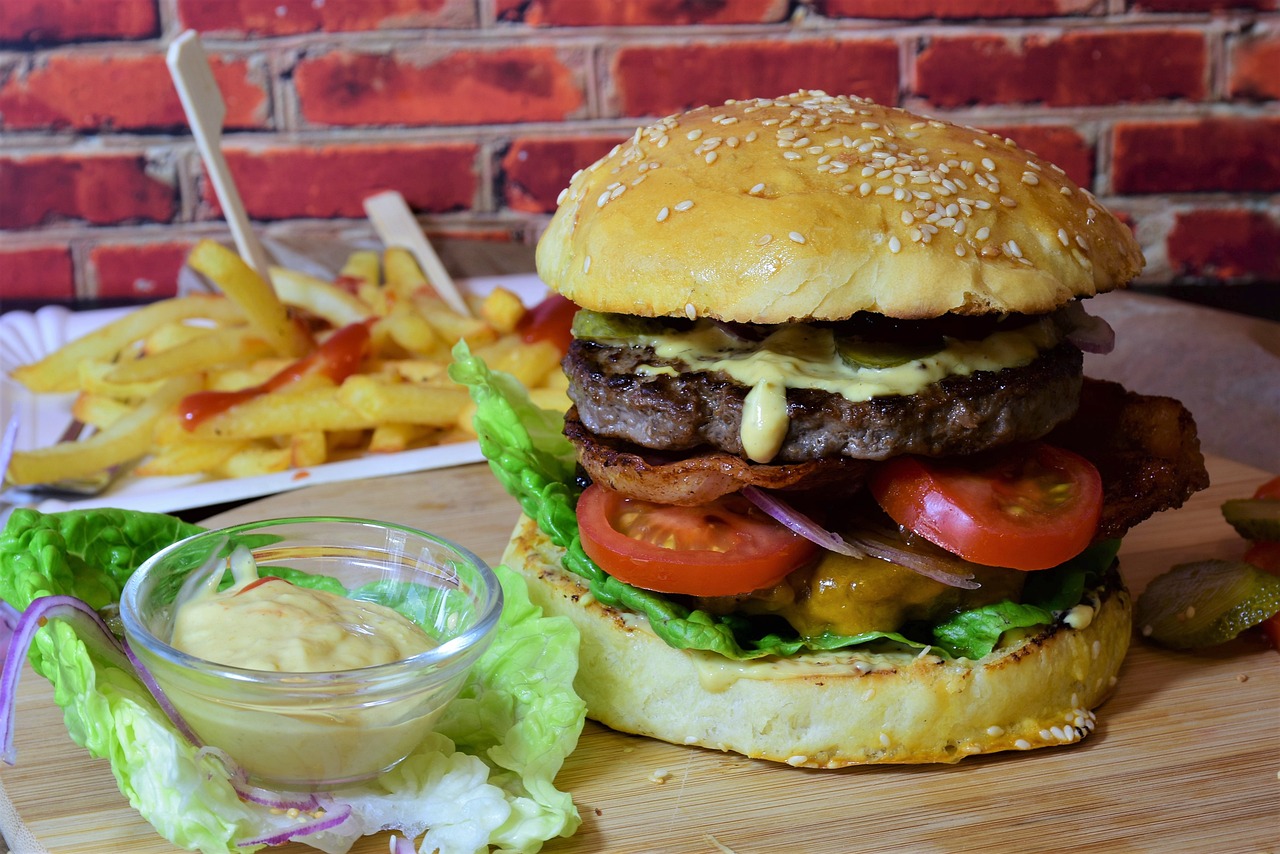
The Stiliano family tilled and endured in the cotton fields to earn enough money to establish a cafe in Monto about 96.2km from Biloela offering quick service, long opening hours, and tasty meals seven days a week.
Their cafe offered the traditional English-style steak and eggs, a mixed grill, chops and sausages, fish and chips as well as the American hamburger, ice cream, sundaes, milkshakes and sodas could be purchased as sit-down meals or take-away.
Every Tuesday was to become a popular social past-time at their cafe by farmers from the surrounding areas who took time off from their daily chores on their farms to enjoy a delicious cafe-style meal with family or friends.
Americanization of Eating Habits in Australia
The Greek immigrant cafes and milk bars had transformed Australian food culture from the very start of the twentieth century.
In most suburbs and country towns in Australia, the Greek cafes were open all hours, seven days a week.
Many early Greek cafe owners in Australia had first sought their fortunes in the United States then, brought the food culture ideas to Australia when they migrated there.
After World War II and especially after 1952 many Greeks who migrated to Australia brought with them their traditional Greek cuisine.
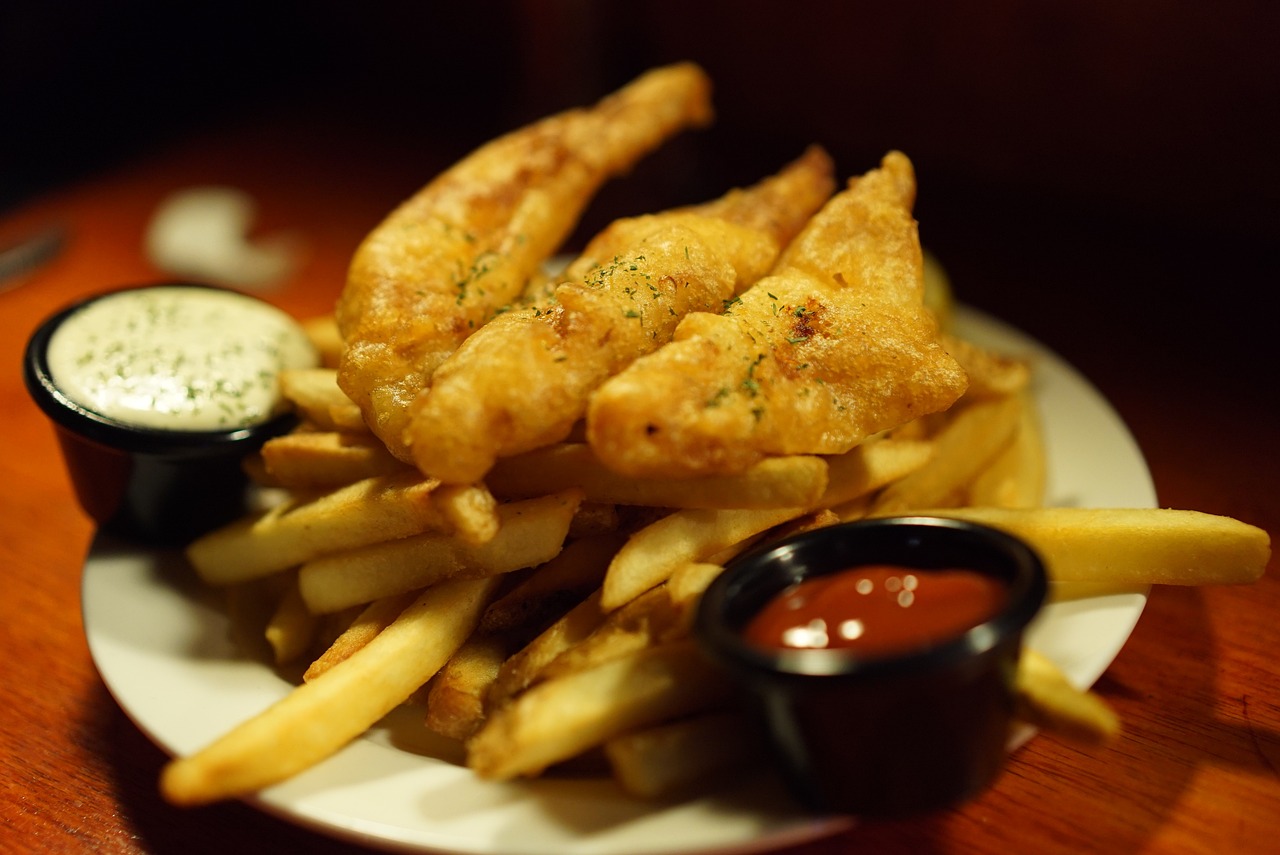
Adelaide, South Australia
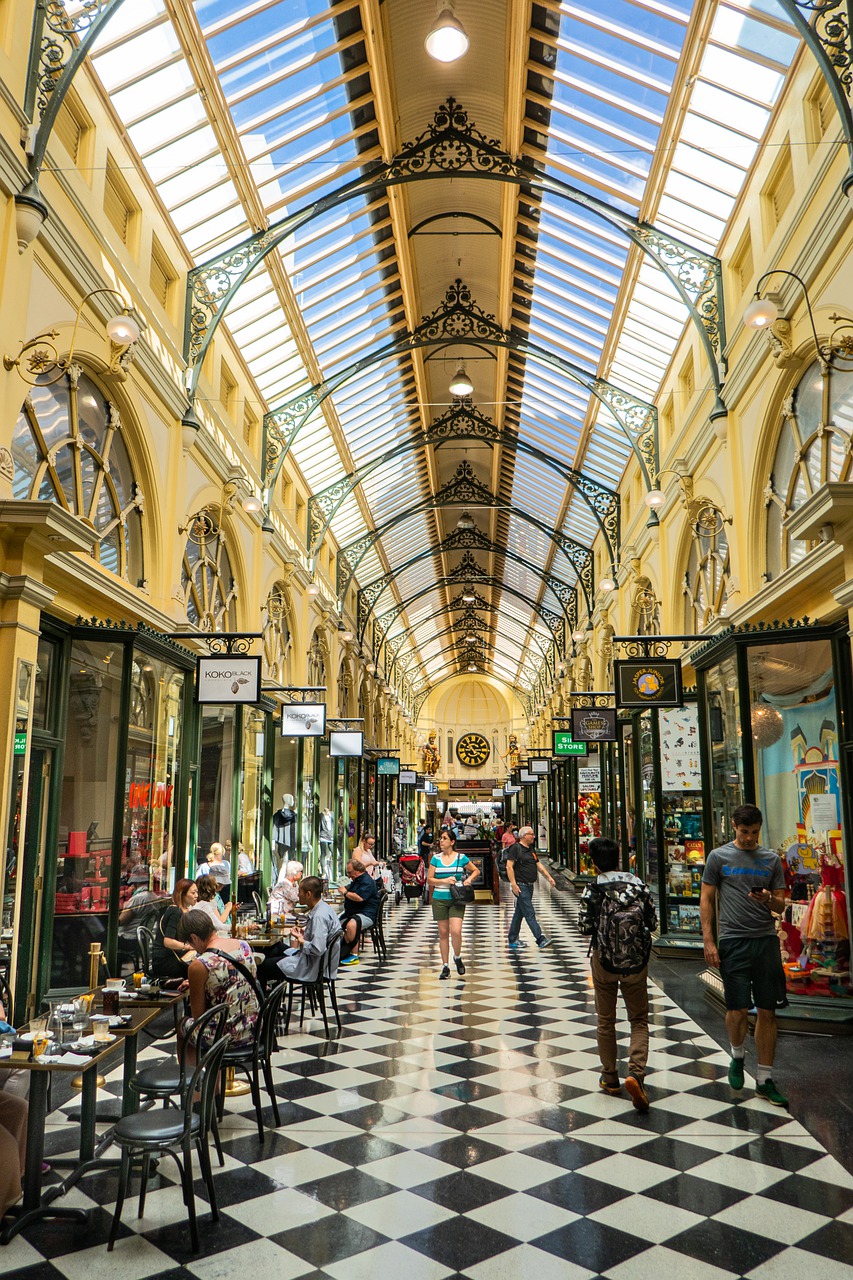
The Stiliano family decided to move from Queensland to Adelaide, South Australia in 1951.
Steve and his son's George and Philip drove 2,148.8 km from Monto to Adelaide by car.
Anna, her mother, and brother Gary traveled to Adelaide by aeroplane.
The Styliano family set up a fish and chip shop at Jetty Road, Largs Bay for three years and then moved to the working-class suburb of Thebarton where they continued to work in small business and later in farming.
Steve and his wife Erini worked long hours in harsh conditions and then with the full time help of their eldest daughter, Anna in their Fruit and Veg business.
Anna married Stan Itsines in 1966.
Their two children are Peter and Irene.

Stamatis (Stan) Itsines
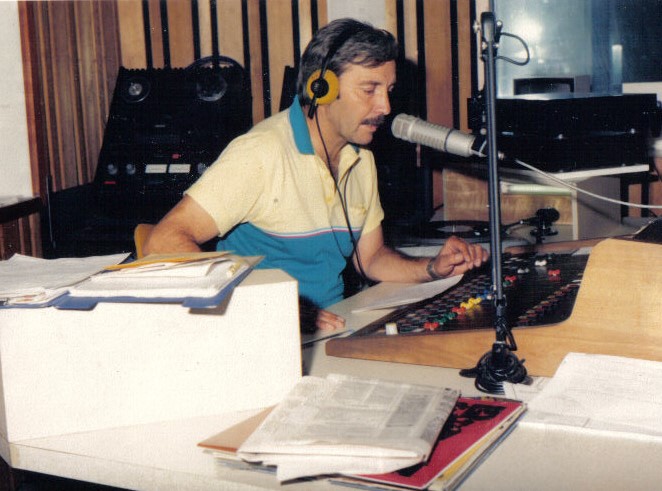
Stan's early life began in adversity during the turbulent years of World War II.
He was born in 1939 in the beautiful, little Dodecanese island of Kos - the island of Hippocrates, the father of Medicine.
During this time, the Dodecanese Islands were under Italian occupation since 1912 and, during World War II, Italy was a part of the Axis Powers allied with Nazi Germany.
After the Italian surrender in 1943 however, the Dodecanese Islands briefly became a battleground between the Germans against the Italian and Allied forces.
Throughout Eastern Europe, the Balkans and the Dodecanese Islands countless thousands were displaced and forced to seek sanctuary in the refugee camps of the Middle East.
In 1944, the Germans removed the residents from their homes in Kos and made the area a base which forced many to flee to Turkey.
The Turks then moved them as well as thousands of other refugees to the Middle East where the Greeks were placed in three refugee camps in the Gaza Strip.
Other Greek inhabitants of the Dodecanese found their way to British protection in Cyprus.
During the German bombing of Kos, Stan's mother and sister were killed.
Stan's father decided to leave his youngest son John with his wife's sister in Kos then took Stan and his other brother Con to Turkey (ancient Greek Harlicanusas - now Budrum, Turkey) where they stayed for about a year.
When World War II ended in 1945, the English government then helped the Greek refugees to return to Rhodes Island and from there back to Kos.
While in Rhodes Stan's father placed him in an orphanage and from there a relative took him into his home.
After about a year in Rhodes, Stan and his family were reunited in their native island of Kos.
As a young adult, Stan served as a Telecommunications Officer in the Greek Navy.
In 1964, he migrated to Adelaide, South Australia where he met and married Anna Stiliano in 1966.
Community Service
Stan is a prime example of the kind of people who make a difference in their community by giving generously of himself through his strong on-air presence on radio and through his valuable service to youth.
The instantly recognizable golden voice of Stan Itsines with his easy listening style and distinct warmth has always been one of the most popular of the ethnic radio hosts in Adelaide.
With over thirty years of voluntary community service, he has successfully maintained his appeal to audiences producing and presenting his wonderful program, Yalazio Agean for the Greek community beginning with Radio 5EBI-FM and then with Radio Ena.
Stan was also an outstanding soccer and basketball player in his native island of Kos and was a champion athlete of the Dodecanese Islands in the 400 and 800 meters.
The reward of giving to his community extended further with his valuable service to youth by passing on his soccer and athletic skills to the youth of his community as a coach.
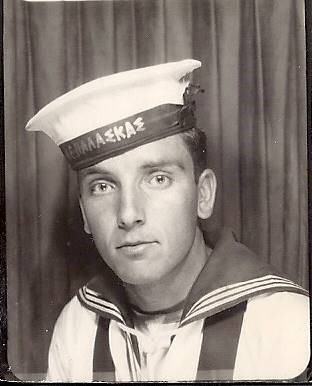
Ezine Articles Author Link
Click on the Link Below

Newsletter Opt-in-Form
The Keen Traveler
Recent Articles
-
The Power of Money
Mar 23, 25 03:53 AM
The power of money provides financial security, enables one to fulfill financial needs, improves the quality of life and gives peace of mind during unexpected financial emergencies. -
Simplicity tranquility and enlightenment
Mar 16, 25 06:01 AM
Simplicity tranquility and enlightenment empowers the individual to live lighter and to add value to life through meaningful goals. -
Faith History and Culture
Jan 02, 25 12:48 AM
Faith history and culture have impacted human history in all places and times.


